13 business models to generate revenue
How businesses can generate revenue has changed a lot over the last decade. Choose the most appropriate business model for your company from these 13 business models updated for 2021.
1. Control and be rewarded from your own data business model
In exchange for convenience and a personalized experience, brands have been telling consumers to give away their personal data and relinquish any control over it.
We now know how brands used their consumers’ data and the damage they have caused.
Also, selling users’ personal data to third parties has been a huge source of revenue for these companies.
According to the latest PwC report, times are changing.
Consumers are demanding both a better, data-enabled experience and more flexibility and control over how their information is used.
In addition to this, consumers are starting to ask themselves: why should only companies profit from selling their data? They should take a piece of the pie as well.
Gener8 Ads is a web browser offering exactly that: it lets users control and earn from their data whilst browsing the web.
Gener8 Ads works with companies in the capacity of a media owner to do three things:
1. Provide premium media for them to reach a highly defined audience.
2. Use their proprietary first-party data to unveil actionable insights about their customers, eg. their purchase habits.
3. To promote their brands and drive action from their audience.
How does Gener8 Ads generate revenue?
Gener8 Ads gives 80% of the revenue back to the user and takes a 20% cut.
Users download the Gener8 Ads browser and choose to keep their data private or earn points any time their data is used. They can redeem these points for products, vouchers or donations to charity.
Watch Sam Jones, the company’s founder pitch Gener8 Ads on Dragon’s Den:
2. Empowering creators business model
What is the creator economy?
The creator economy has been growing exponentially in the past few years. It is estimated that more than 50 million people worldwide consider themselves to be creators.
Mighty Networks defines the creator economy as an economy built around highly motivated, creative, and skilled individuals that have started their own brand, business, or community utilizing a digital platform to share their work.
Not coincidentally, Mighty Networks is one of the platforms contributing to the creator economy. It is a community-focused platform that helps users build their businesses.
Mighty Networks offers users three plans they can choose from: the free plan, the business plan ($81/month) and the community plan ($23/month).
This is how users can drive business revenue depending on their chosen pricing plan:
- Charge for access to their membership site or group
- Charge for access to their online courses
- Becoming a Mighty Affiliate
3. Shopstreaming business model
Shopstreaming is the combination of live streaming, entertainment and shopping.
China is leading the shopstreaming market with 67 billion dollars in global sales for 2019 and an estimated 149 billion dollars for 2020.
If these stats show anything is that consumers want to buy from influencers during shopstreaming sessions.
It’s a business opportunity that saw various developers create digital platforms intended to transform the way to stream live events.
Livescale is one such developer. The company’s shopstreaming platform, LivescaleTV enables businesses to reach, engage, and monetize their audience, as well as understand the behaviours and interactions of their users.
L’Oréal Canada was the latest brand to use Livescale TV when they hosted a three-day shopping streaming festival.
Results:
- over 50% of product purchases from new customers,
- 300% higher conversion rate than the company’s website,
- 40% audience engagement.
4. Blockchain-as-a-service business model
According to recent reports, the global blockchain-as-a-service market size is expected to grow at an impressive compound annual growth rate of 62.73% to $52.5 billion by 2026.
Blockchain as a Service (BaaS) is a type of blockchain service offering that allows business customers to use cloud-based solutions to develop, host and adopt their own blockchain applications, smart contracts and other relevant functions on the blockchain.
The main drivers of the global Blockchain-as-a-Service market are:
- increasing awareness of the benefits provided by blockchain technology;
- need for security in transactions.
The top leaders operating in the Blockchain-as-a-Service (BaaS) market: Oracle, Microsoft, Accenture, Alibaba, IBM and Huawei.
5. Subscription business model
The subscription business model is a business model in which customers pay a recurring price at regular intervals for access to a product or a service.
The first companies to adopt the subscription business model were the news publishers whose readers paid a monthly fee to have newspapers and other magazines delivered to their door.
In more recent times, companies providing digital tools and platforms like Canva, Monday or Grammarly generate recurring revenue based on the subscription business model.
Other companies didn’t start as subscription-based businesses but recognized an unmet need for their products to be delivered on a monthly basis.
Customers opt for products to be delivered on a monthly basis because it’s convenient and saves them precious time.
Here are some examples of products delivered in subscription boxes; some also provide customization:
- Dog food subscription boxes (PetPlate, Jinx, Crafted Kibble)
- Beauty care and makeup subscription boxes (GlossyBox, BoxyCharm, Birchbox)
- Meal subscription boxes (Pasta Evangelists, Raw Generation, Hello Fresh)
6. Freemium business model
Freemium is a business model in which a company offers basic features to users at no cost and charges a premium for supplemental or advanced features.
It’s an appealing strategy for both companies and customers. Free is a powerful word in marketing because of its ability to instantly grab a customer’s attention. If basic free features are valuable to them, customers are more likely to pay for advanced or additional features.
When used correctly, the freemium business model can drive massive user adoption.
Dropbox, Zoom and Spotify are great examples of the freemium business model.
Dropbox has an annual revenue of $1.91 billion, Zoom – $2.6 billion and Spotify, $9.34 billion.
7. Dropshipping business model
The dropshipping business model is used in retail where the seller purchases the product from a third party (manufacturer or wholesaler) and has it shipped directly to the customer. The seller doesn’t hold the products in stock.
The main benefits of the dropshipping business model:
- Low investment
- Easy to start
- Perfect for beginner entrepreneurs
- Flexibility
- Remote work
- Easy to scale
- Wide selection of products
Among the top eCommerce platforms for dropshipping businesses are Amazon, Shopify, WooCommerce and Magento.
8. Drop-servicing business model
Drop servicing is a business model where your company sells other people’s services online.
Your company doesn’t perform the service, a third-party company performs the service.
9. Commission-based business model
The commission-based business model is a revenue model where a user is charged a fee for each transaction. The platform may charge either the seller or the buyer.
Examples of commission-based businesses: PayPal, Uber, Airbnb, Etsy, eBay.
10. Hidden revenue business model
If the service is free, you are the product, goes a very famous saying.
What it means is the service is not actually free. As the user, you pay for it, not with money, but with your personal data.
It’s the business model of digital giants like Google, Facebook, Instagram, Pinterest etc which collect users’ data and sell it to businesses for advertising purposes.
In 2020, Google generated almost $147 billion in revenue from the company’s ads business. Facebook generated close to $84.2 billion in ad revenues.
11. Razor and blade business model
The razor and blades business model is a business model in which one item is sold at a low price in order to increase sales of a complementary good, such as consumable supplies.
The best examples of companies generating revenues with this type of business model are suppliers of razors and blades (Gillette), printers and ink cartridges (Xerox), coffee makers and coffee pods/capsules (Nespresso), 3D printers and printing materials, game consoles and games.
12. Reverse razor and blade business model
The reverse razor and blade business model is a type of business model where the main product is sold at a premium price and the consumable, at a lower price.
Apple is the standard example of the reverse razor and blade business model. The main product, the iPhone, is sold at a premium price. Once the customer owns an iPhone, they have access to low-priced features like music on iTunes, movies or Mac OS and iWork free of charge.
13. Affiliate marketing business model
The affiliate marketing business model is a revenue model in which a company compensates third-party publishers to generate traffic or leads to the company’s products and services.
The publishers are paid in commission for every sale they make.
How does it work?
The affiliate shows a link for the product they are selling on their website or social media, customers click on the link which sends them to the store. If they purchase the product, the affiliate is paid a commission.
Two of the top-earning affiliate marketing platforms are Amazon Associates and Shopify Affiliate Program.
Join the Conversation
We’d love to hear what you have to say.
Get in touch with us on our LinkedIn Page, Facebook Page, Twitter or TikTok.
Behind Apple’s product launch event: STORYTELLING STRATEGY
When you think of Apple as a brand – you think of INNOVATION, CREATIVITY and SOPHISTICATED DESIGN, shaped in the simplest way. When you think of iPhone, iMac or iPad, you think of a global brand. However, global brands are not created over night, but with consistency and a lot of strategic decisions that are taken with every single step.
In this particular case, Apple managed to:
- Create products that most creators around the world want;
- Design a lifestyle enhanced by the versatility of their gadgets;
- Build a complex ecosystem that is completely interconnected.
- And most importantly, they succeeded in creating an incredibly engaged brand culture.
Building a global brand takes years, organising an outstanding event requires knowledge that is applied wisely, through a few strategic decisions.
From this article you will learn more about what stands behind an outstanding launching strategy and what you should consider when creating your own. Enjoy!
APPLE INC. – EVENT LAUNCH STRATEGY DECONSTRUCT – Based on the online launch on April 20th, 2021.
ANGLES:
Pre-suasion and how Apple FRAMES the mood of the AUDIENCE in creating a certain positioning for their products;
How they enhance the BRAND CULTURE, build TRUST and create SYNERGY with their audience;
3. How Apple leverages the fundamentals of MEMORY PALACE technique through particular scenes.
1. Pre-suasion and how Apple FRAMES the mood of the AUDIENCE in creating a certain positioning for their products:
There’s a very popular concept in the art of persuation, that Robert Cialdini is talking in his books and it’s called pre-suasion.
Pre–suasion is the practice of getting people sympathetic to your message before they experience it. It’s about all the things that happens before you ask someone to say yes to your proposal.
Regarding this, below you’ll find the PRE-SUATION SCHEME in Apple’s April 20th event. Take a look at it because we’ll go through each point in particular, below:
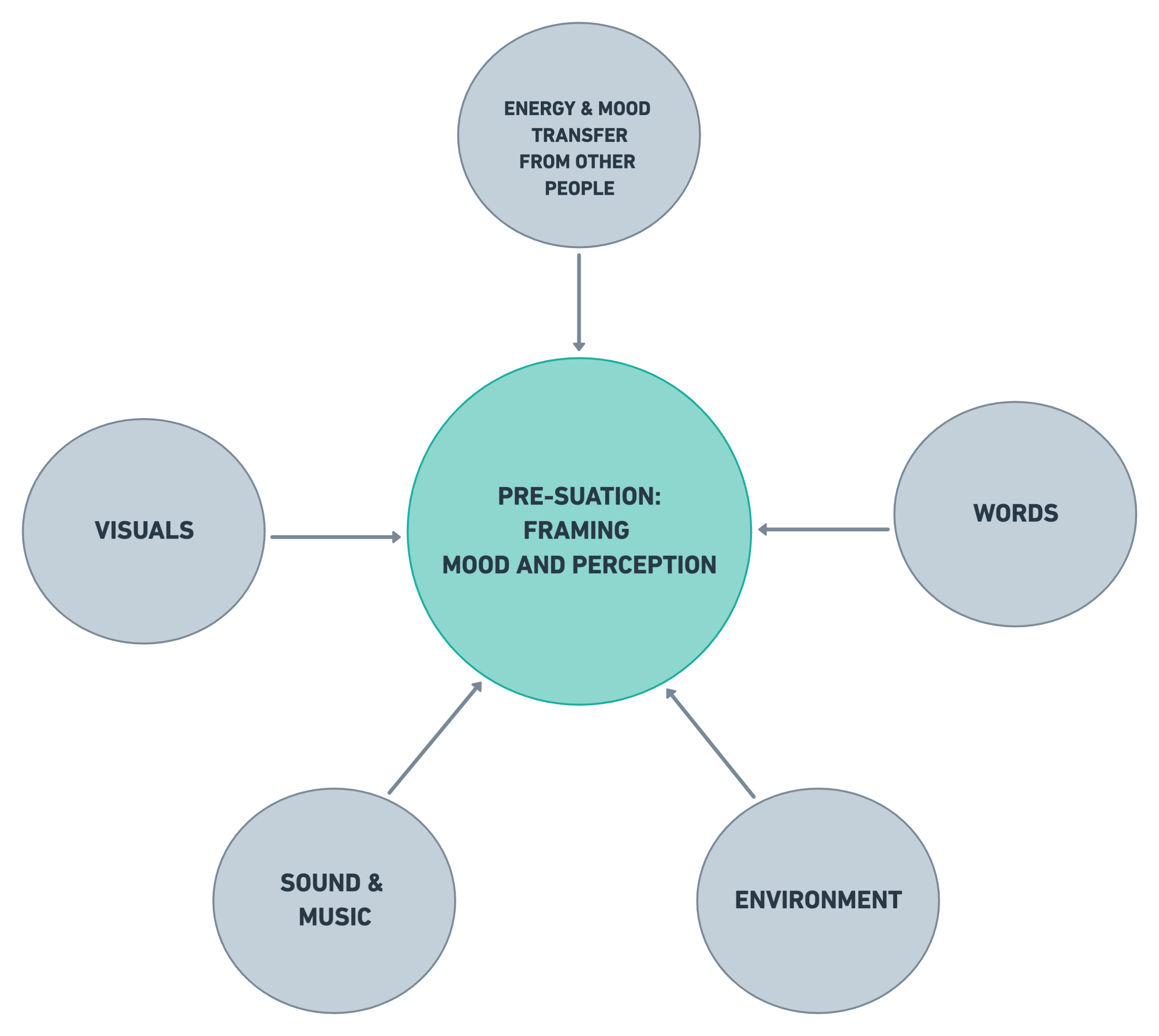
- WORDS & PHRASES:
You’ve probably heard before that the words we use can frame how we think and act. Well, if you think about it in strategy terms, just imagine that the phrases and the words that a brand uses can frame its audience perception and buying decisions.
Apple manages to leverage this insights in an outstanding way and to emphasise this, take a look about how many times they have used certain WORDS in a 1-HOUR event and what are the PHRASES they use in their event script:
1) MOST USED WORDS:
If you look at the words (grey circles) that are repeating in the event script and you count the number of times (green circles) each of them is used in a 1-hour timeline, you understand what are the main takeaways that people leave with, after watching it. And the most imortant role in the whole script stands right at the end, with a 238 mentions in just 1 hour. Take a look below.
The perception of Apple products after watching a launching event.

2) USED PHRASES:
In the same strategic way that they are using particular words to create perception, the BRAND’S PERSONALITY is enhanced once again through powerful phrases that do the same thing. You can find below a few of them extracted from the 1-hour script:
Apple Card Presentation:
- Our customers are LOVING all the benefits of Apple Card and we believe it’s THE MOST SUCCESSFUL credit card launched EVER.
- iPhone 12 is THE MOST POPULAR SMARTPHONE IN THE WORLD, and people LOVE its AMAZING features.
- We’re so EXCITED to introduce a new, GORGEOUS purple. / It looks STUNNING. / It’s ABSOLUTELY BEAUTIFUL.
Apple TV Presentation:
- Apple TV 4K is now built with the A12 Bionic, bringing a new level of PERFORMANCE that will be a MASSIVE upgrade to your TV.
- Apple TV 4K brings THE ABSOLUTE BEST entertainment experience to your home.
- The results can be DRAMATIC, with more natural colors and improved contrast making your TV look better than EVER.
iMac Presentation:
- There has never been a more EXCITING time for the Mac.
- And our Mac business has never been STRONGER.
- Our M1 products have continued to fuel the Mac’s INCREDIBLE growth.
- M1 has been a GIGANTIC leap forward for the Mac.
- It has redefined the MacBook Air, MacBook Pro, and Mac mini, SHATTERING EXPECTATIONS of what each of them can do.
- Users have been ABSOLUTELY blown away by their responsiveness and amazing battery life.
- These Macs demonstrate how M1 can DRAMATICALLY move the Mac forward.
- The all-new, completely redesigned iMac is MORE personal, MORE POWERFUL, and MORE CAPABLE than EVER.
- And it’s INCREDIBLEfrom every angle.
- iMac’s new form is STUNNING
- So you can see your content in all its GLORIOUS detail.
- Every image is BRILLIANT and vivid.
- We’ve taken iMac’s camera, mics, and speakers to a whole NEW level.
- This camera will make you look like a rock star. In fact, it’s THE BEST camera we’ve EVER put in a Mac.
- Simply put, it’s THE BEST sound system ever in a Mac, and we can’t wait for you to hear it.
- And in Apple Arcade, gaming on iMac is BETTER than EVER,with AWESOME and EXCLUSIVE games.
- ..export your favorite video projects in iMovie FASTER than EVER.
- You’re going to LOVE the combination of M1 and macOS on the new iMac.
- And Magic Trackpad, still by far the industry’s BEST, has a refined shape to match the new keyboard.
- .. the new iMac can DO IT ALL..
- That’s DEFINITELY magic.
- With iMac, the possibilities are ENDLESS.
- ..iMac is THE MOSTpersonal, POWERFUL, CAPABLE, and simply THE MOST fun it’s EVER been.
iPad Presentation:
- The M1 chip is not just in the Mac, it’s now in iPad Pro. And it’s gonna BLOW YOU AWAY.
- A-series chips to deliver a POWERFUL and responsive experience that’s YEARS AHEAD of anything else.
- ..or Xbox game controllers, with haptics, makes playing games on iPad Pro INSANELY fun.
- With this combination of CPU and graphics performance, the new iPad Pro is, yet again, THE FASTEST device of its kind.
- ..Signal Processor, and unified, high bandwidth memory architecture make iPad Pro more capable than EVER.
- The new iPad Pro also allows users to access their content faster than EVER..
- ..the new iPad Pro is, yet again, the fastest device of its kind. It’s BUGGER than that..
- And, for our MOST demanding users, a new 2TB configuration gives you ENORMOUS storage capacity,..
- Making it the FASTEST, MOST VERSATILE port ever on an iPad, or any other device of its kind.
- This is HUGE! Super fast 5G cellular connections lets users be creative and productive wherever they are.
- That’s a MASSIVE increase over the 72 LEDs that were in the previous iPad Pro.
- The result is an EXTREMELY high one million to one contrast ratio.
- There’s NEVER BEEN a display that delivers this kind of visual experience on any other mobile device.
- So users can now do things they could NEVER do BEFORE.
- With this AMAZING set of features, it goes BEYOND any display in the world.
- When I think of M1 on the iPad, there are truly NO LIMITS to what’s possible creatively. The POWER that’s there… It’s a MONSTER. We can do more. We can make BIGGER canvases and we can do way more with our brushes..
- Processing power is INSANE.
- We’re always AMAZED by the new capabilities our developers put in the hands of our users.
- Of course, you can’t talk about iPad Pro and not talk about the PHENOMENAL accessories..
- Apple Pencil transforms iPad Pro into an IMMERSIVE drawing canvas and the world’s BEST note taking device by far.
- An INCREDIBLE value for such an INCREDIBLE device.
- We’re so excited about the new iPad Pro.
- This is the most OUTRAGEOUSLY capable and VERSATILE iPad Pro we’ve EVER made.
- In every way, this is a GIANT leap forward for iPad.
- We can’t wait to get these new products into your hands and see all of the AMAZING things you’ll do with them.
2) ENVIRONMENT FRAMING
Weather and light have a tremendous importance in setting a person’s mood and Apple marketers know that.
Choosing a sunny day, areas that are bright and warm is always a good technique to transfer a certain mood to your audience.
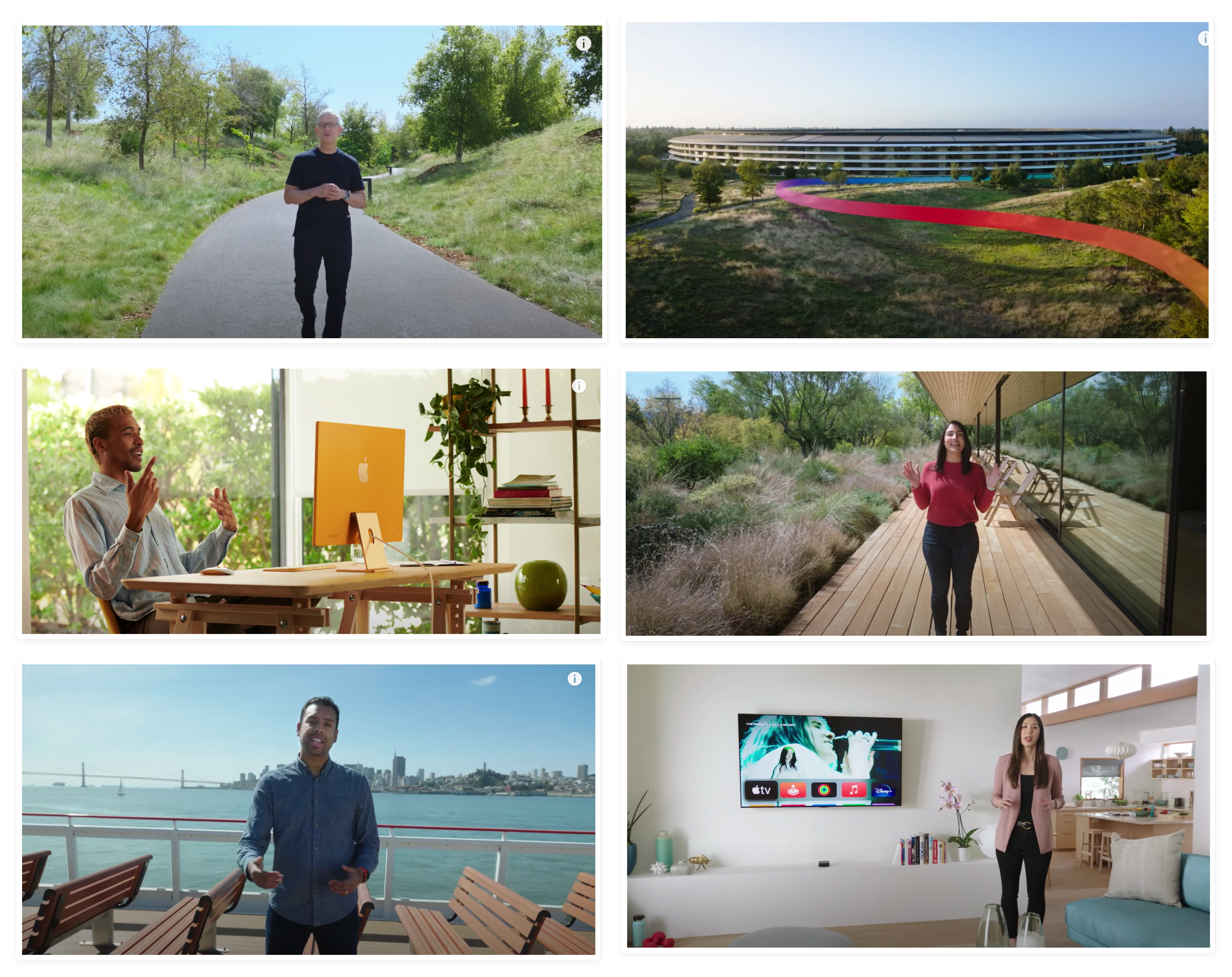
But it doesn’t stop there, if you pay attention to Apple’s setups, there’s more – especially when it comes to the presentations of their products. Having their products on the centre stage, in a setup that makes them bigger than their presenters highlights the idea of GRANDEUR once again. The message is simple:
They are BIG, they are BOLD, they are THE BEST and you have to have them.
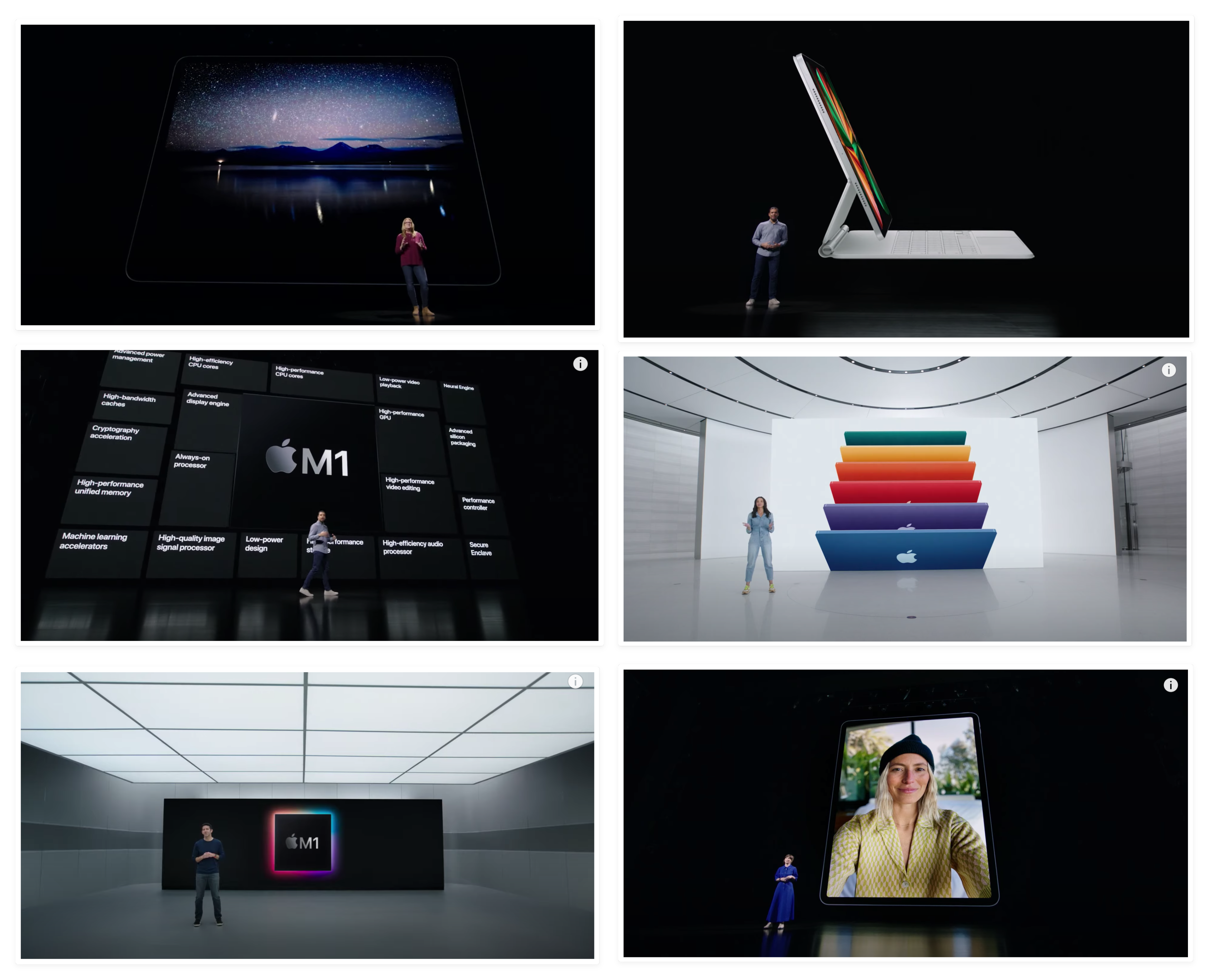
3) VISUAL FRAMING
When it comes to visuals, what we are able to see in most of Apple’s launches (not just the one making this study case) is the VIBRANT COLOURS they use. Enhanced chromatic in visuals is translated as everything that has vibrant colours in our lives, weather is clothes, objects or fruits:
It means FRESH, it means NEW, it means VIVID.
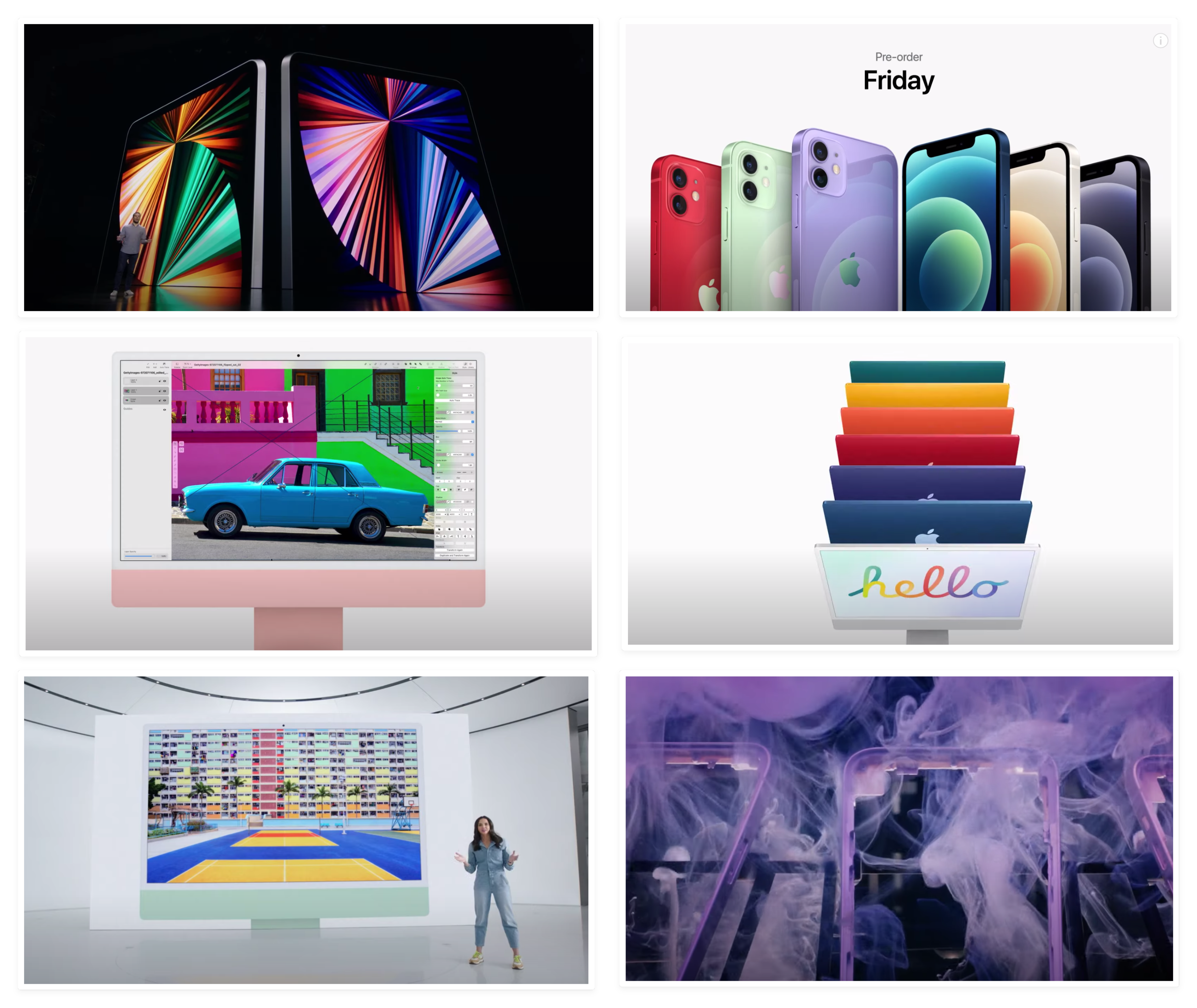
Furthermore, COLOURS appears to be also the LEITMOTIF of the event and it’s translated through both graphics and sound.
The overall design elements and products:
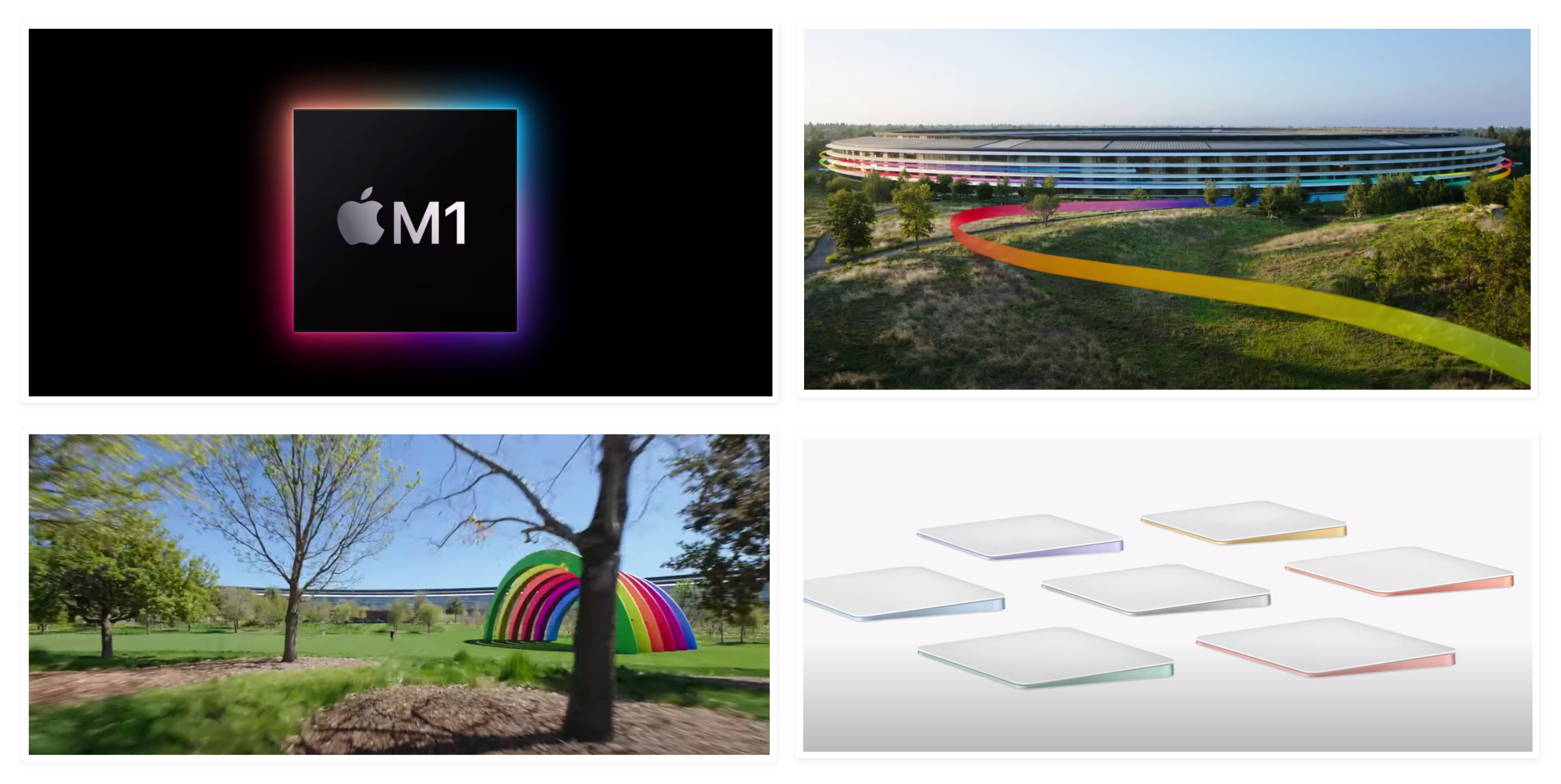
4) SOUND & MUSIC
To understand how sound effects impact the launching event, you will have to literally watch and listen to it. The underline technique stands in amplifying the whole experience through framing what people hear and they are told. It’s a fundamental tactic used to mentally transport your audience closer to the state you want to create.
Besides the basic sound effects that enhance certain gestures and actions, Apple has also carefully picked the songs for the event and they are the ones mentioned above.
The themed songs:
- ♪ “Every Color” by Foster The People ♪
- ♪ “Love Looks Better in color” by Lizzo ♪
- ♪ Let you heart See the colors ♪ – Chemical Brothers
Take a look of the lyrics below and think if they make the audience entering a certain mood:
THE EVENT BEGINS WITH:
♪ Let you heart See the colors ♪ – Chemical Brothers
♪ Let your heart ♪
♪ See the colors ♪
♪ All around you ♪
♪ I’ll be loving you, Yes, I will ♪
♪ I’ll be loving you ♪
♪ I’ll be loving you, Yes, I will ♪
♪ I’ll be loving you ♪
NEW PURPLE iPhone ANNOUNCEMENT
♪ “The Candy Man”” by Aubrey Woods ♪”
♪ Who can take a sunrise ♪
♪ Sprinkle it with dew ♪
♪ Cover it in chocolate And a miracle or two ♪
♪ The Candy Man ♪
♪ Because he mixes it With love ♪
♪ And makes the world Taste good ♪
“♪ ‘Cause the Candy Man thinks It should ♪ “
AIRTAG PRODUCT ANNOUNCEMENT
♪ “Every Color” by Foster The People ♪
♪ I can see ♪
♪ I’m caught up Drifting in your rainbow eyes ♪
♪ And I can see Every color in me ♪
♪ I can see every color in you ♪
iMac NEW DESIGN ANNOUNCEMENT
♪ “Love Looks Better” by Lizzo ♪
♪ Sick six piston ♪
(presenting the 6 NEW iMac models)
♪ Tiptoe kissin’ ♪
♪ Catcall kittens ♪
♪ Whole milk lickin’ ♪
♪ See my vision ♪
♪ Rainbow smitten ♪
♪ Nobody safe, nobody ♪
♪ You and you and you Can be my lover ♪
♪ ‘Cause love looks better In color ♪
♪ Color me, color me, Color me, color me ♪
♪ Color me, color me, Color me, color me ♪
♪ You can be my lover ♪
♪ ‘Cause love looks better In color ♪
THE EVENT ENDS WITH
♪ Let you heart See the colors ♪ – Chemical Brothers
5) ENERGY & MOOD TRANSFER FROM OTHER PEOPLE
Daniel Goleman, the world famous psyschologist, said in 2018 on BRAND MINDS stage that:
“The leader sets the emotional state for other people.”
…and the rule doesn’t not apply only in leadership, but in every relationship dynamic that occur between people. We partially mirror the state we see in the people that are surrounding us. Wether is high enthusiasm, focus, or positivity, when we relate with a particular mood, part of its energy it’s transfered to us.
In Apple’s videos you will always find positive moods that people wear – they are highlighting aspirational states that you want and would be able to reach by acquiring their products.
The message is:
“Life’s most important moments are better with Apple.”

2. How Apple enhances the BRAND CULTURE, build PRODUCT TRUST and create SYNERGY with their audience:
1) BRAND CULTURE: There’s no coincidence that all of the event presenters are wearing Apple watches. Brand ambassadors are basically extensions of the company they represent. Wearing or consuming the brand’s products is a core requirement that builds trust in the relationship with the audience, which is fundamental. How could you trust someone that’s recommending you a product if he or she is not using it themselves? – You probably experienced this through influencers’ campaigns.
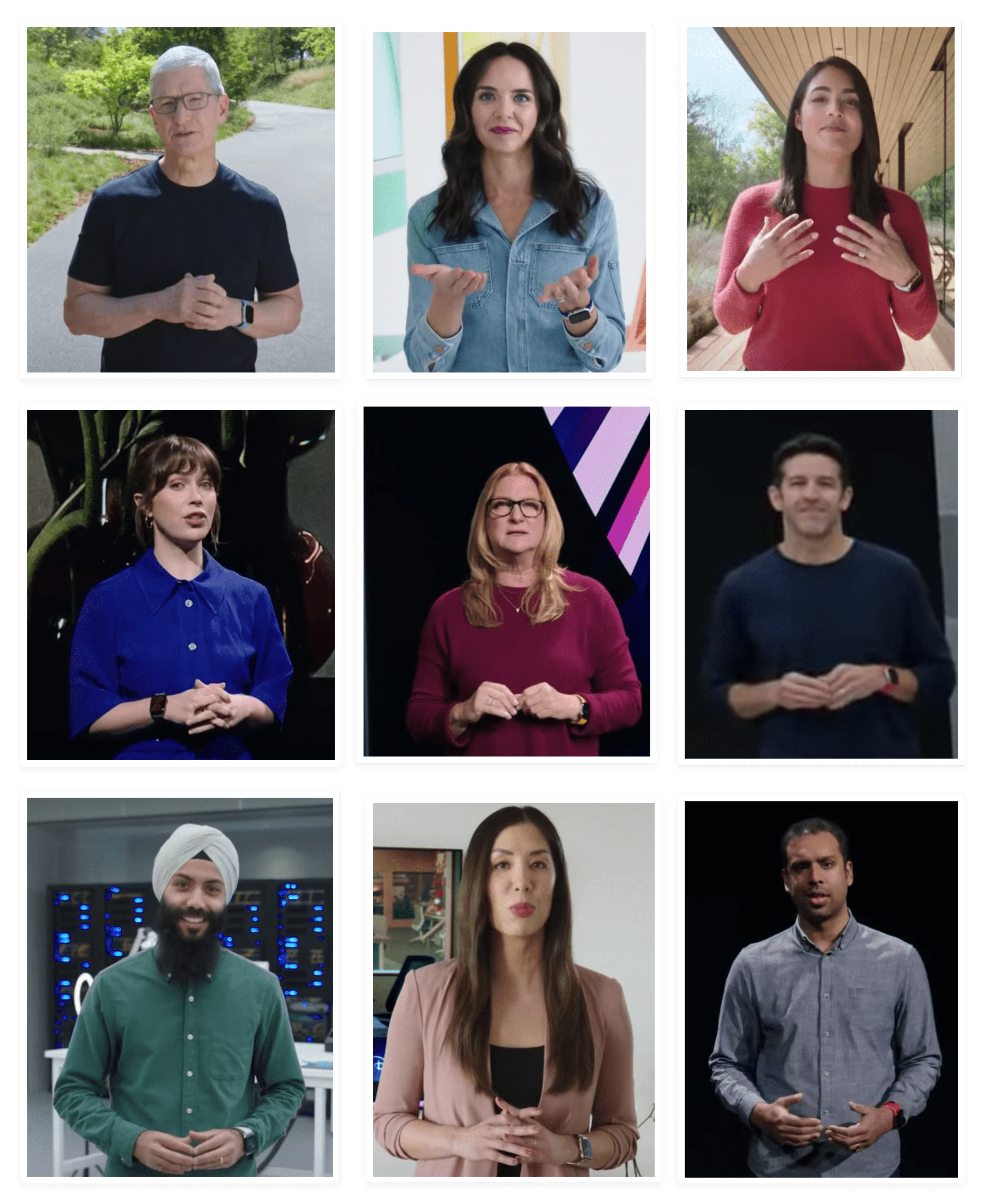
No need to mention about the gender balance we see in the brand’s experts’ mix, which is a reinforcement of gender equality and racial diversity. These are beliefs that are deeply built into Apple’s foundation of values.
2) PRODUCT TRUST – is built through presenting the products – not using actors, but the experts that have created them. In marketing, this is a social proof tactic, called experts’ approval. Look for them on LinkedIn, you will find them all. The same approach is present – this time – through non-Apple employees in the Testimonials promo for iPad Pro, here.
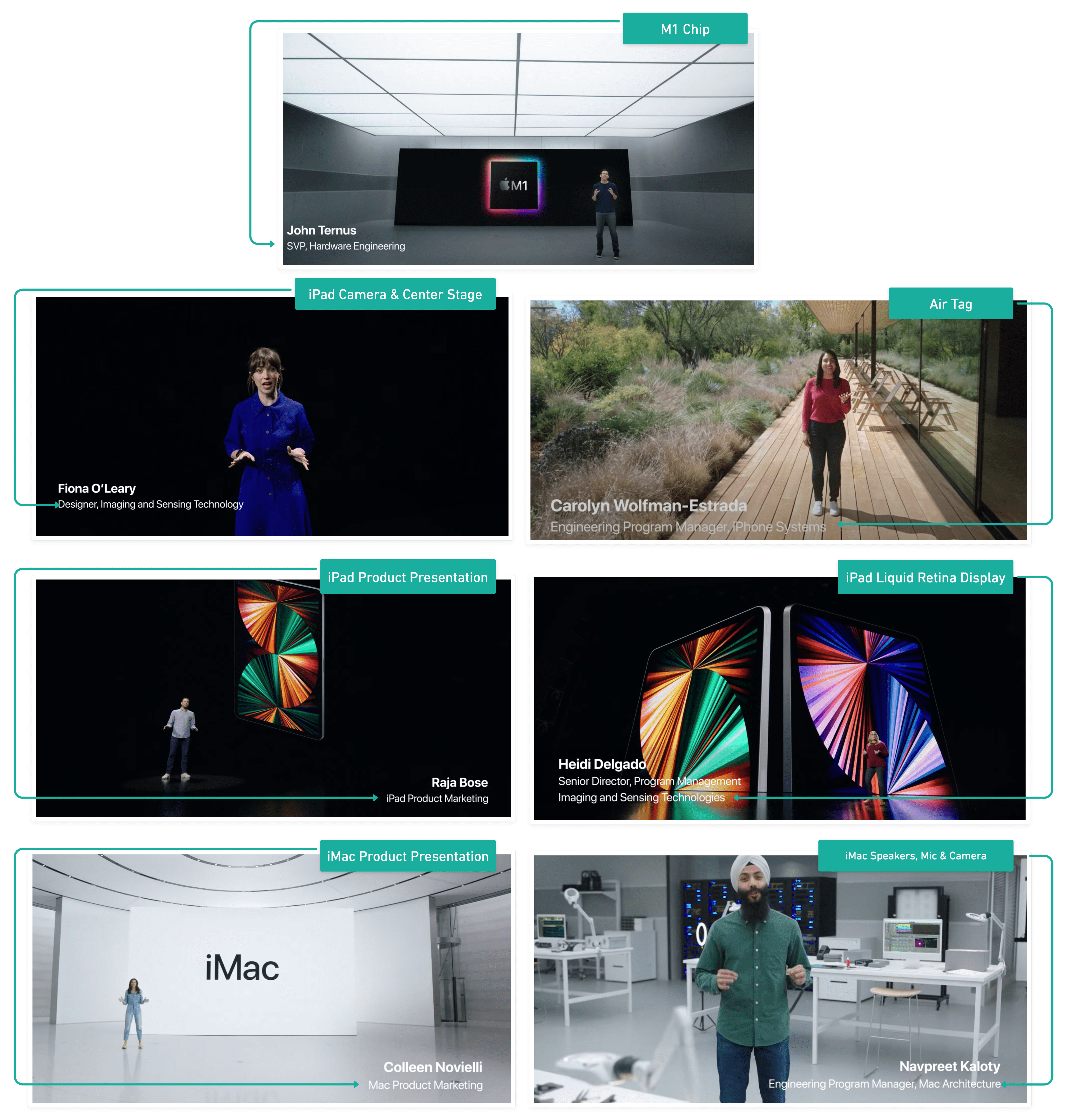
3) AUDIENCE SYNERGY: The idea of Apple products being a part of one’s life is taken farther in their launching events through details most of us do not observe. However, this doesn’t mean, our subconscious minds doesn’t either. Take a look at the scenes below:
- There is a whole chromatic setup built in a way that amplifies the idea that the iMac stands in the centre of one’s life;
- The boldest colour in all scenarios is the Mac’s – everything else – details and accessories gravitate around it;
- The characters’ clothes being in tone with their Mac suggests that the product itself is an extension of their personalities.

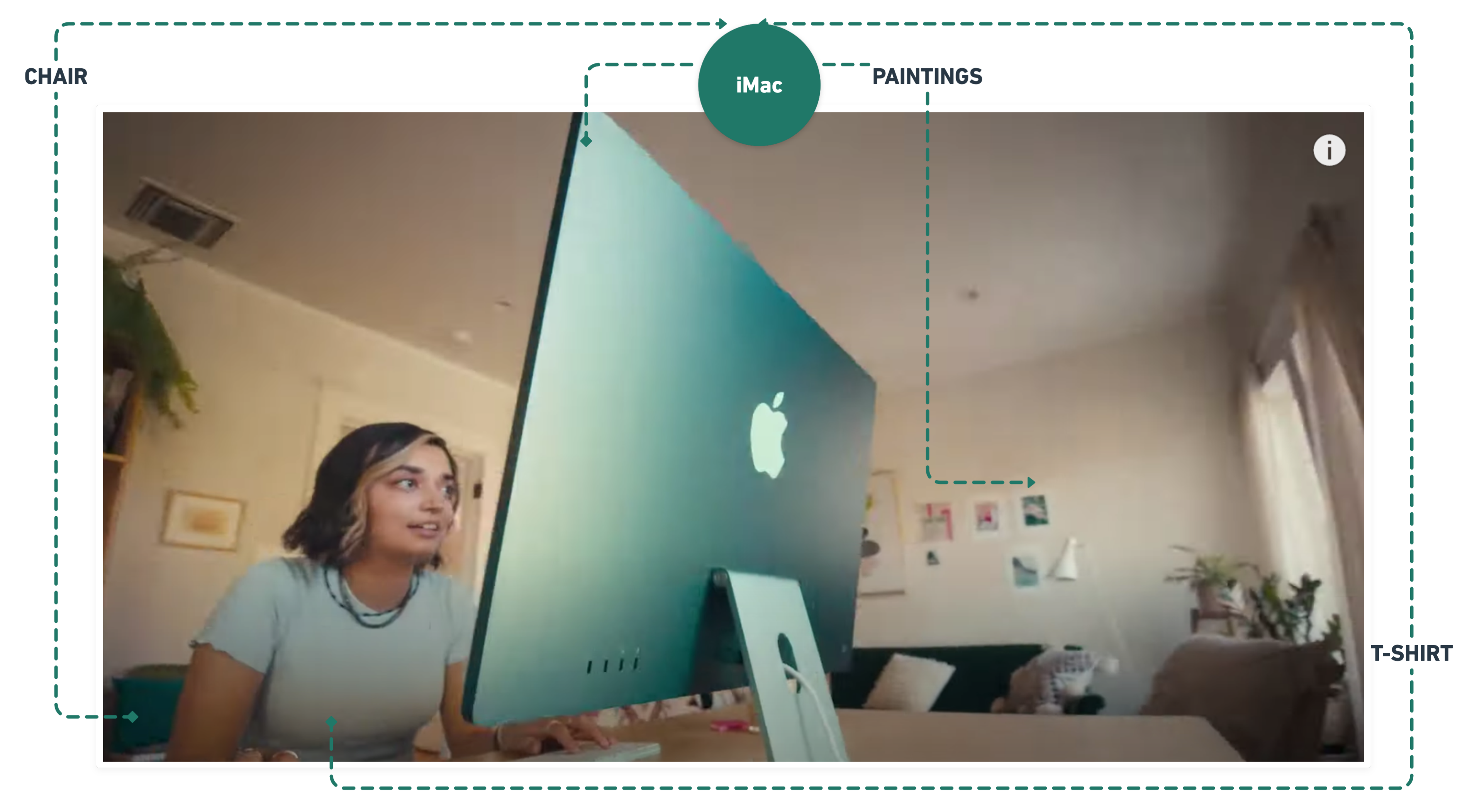
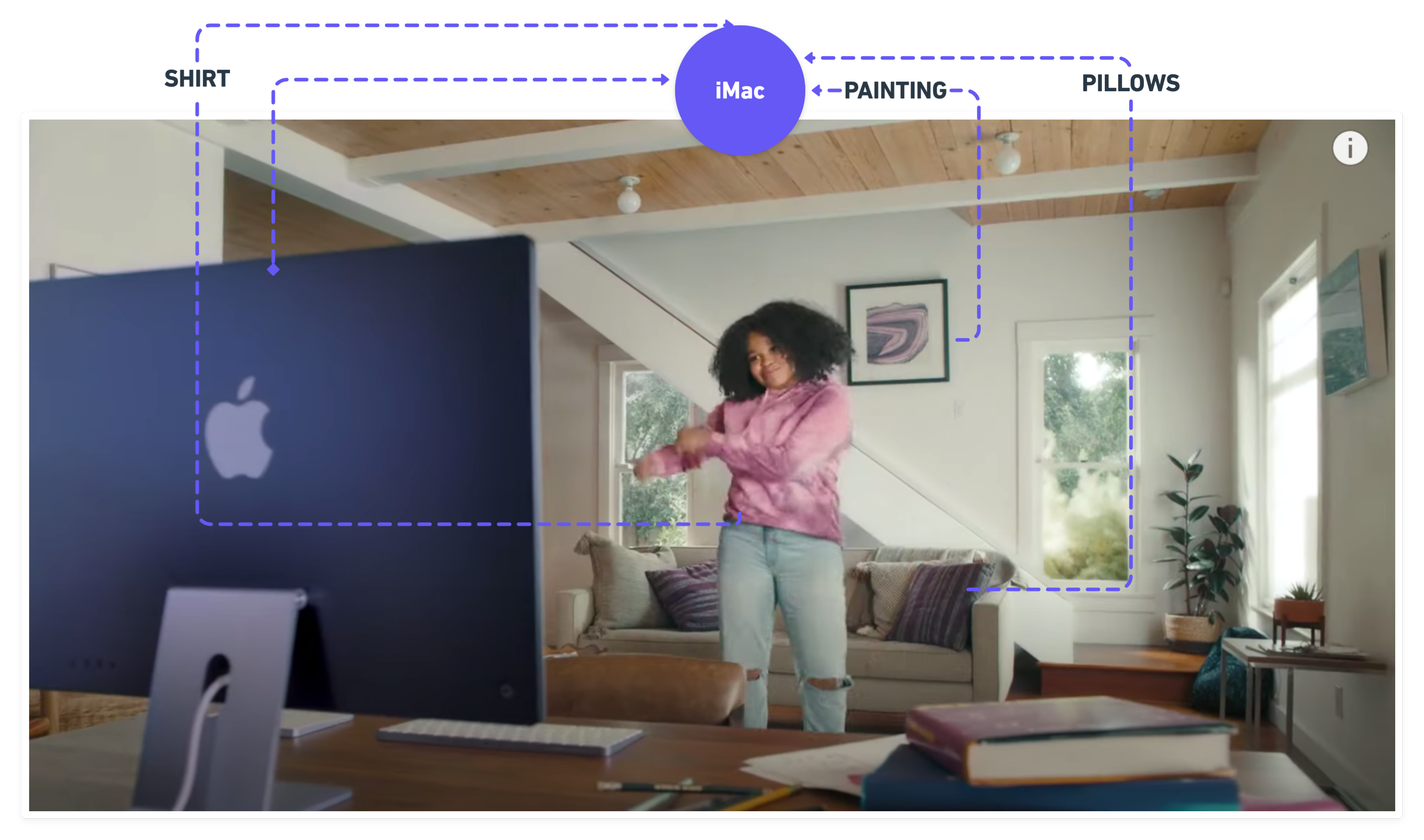

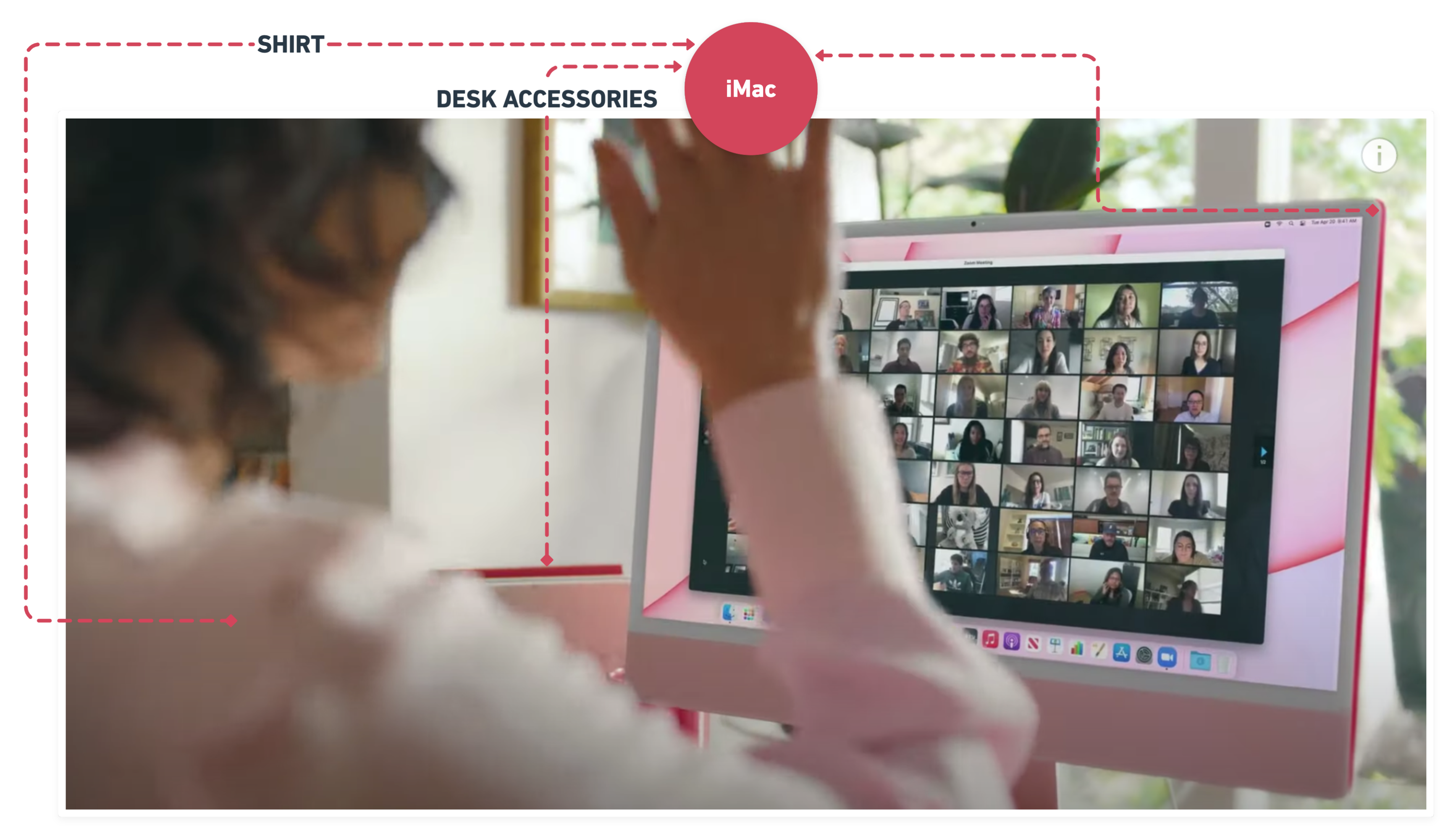

3. How Apple leverages the fundamentals of MEMORY PALACE technique through particular scenes:
The method of loci (loci being Latin for “places”) is a strategy used to recall information and enhance one’s memory through visualisations of familiar spaces. The method of loci is also known as the memory palace, or mind palace technique.
Now, what does this has to do with Apple’s script and storytelling? You might ask yourself how is it useful since the places they used in the video footage haven’t been visited by their audience? Well, there are certain fundamental parts of this particular technique that are used in their scenes.
But before we go through it, find below the key factors in building a memory palace to better understand the concept:
Let’s assume you choose to learn the KEY PILLARS of a MARKETING STRATEGY;
- STEP 1: Choose a place that can be easily visualised as the blueprint for your palace. (Your HOME)
- STEP 2: Walk through your palace to define a route. ( KITCHEN – LIVING ROOM- BATHROOM – DORMITORY)
- STEP 3: Identify specific locations in the palace to store your information. (KITCHEN will be used for the digital campaigns information; The LIVING ROOM for social media and so on…)
- STEP 4: Integrate the information you want to remember in a crazy story that takes place in the space you allocated to it. And remember: the more creative – the more probably your brain will remember it.
Apple is using the last 2 pillars in their strategy.
We could actually mention the first step as well – if we consider the fact that the PALACE is the Apple headquarters. There are a lot of iconic spaces they use in most of their events (2 of them below).

Getting back to their strategy, the technique is simple:
1. Each presenter covers one PARTICULAR FEATURE or PRODUCT;
2. Each time they switch the storytelling from a product/ feature to, the SCENE changes as well;
3. They enhance the memorisation of a particular product through CRAZY PROMO VIDEOS/STORIES:
⚫ See Air Tag’s story here: The challenge of finding one’s keys translated into an Indiana Jones type of quest;
⚫ M1 chip’s importance story here: A story about espionage and the risks one is willing to take for great technology;
⚫ The amplification of iMac’s place in the Apple food chain here: A metaphorical scene of a whale swimming along with the rest of the sea life;
⚫ iPad Pro’s story here: Translated through a video promo projecting its power similar with a rocket launch and a smooth landing on your office with the sound effect of a parachute. Absolutely gorgeous!
4. On top of all the mentioned above, each character that is part of the event’s promo videos is a projection of the audience that Apple is targeting: creative professionals and families. What’s very smart about their strategy is that they are not just recreating with precision their environments, but they are also highlighting with specificity particular apps they are using.
We are basically talking about TRIPLE RELATABILITY:
- Targeting through LOOKS – the way the characters are dressed to enhance personality;
- Targeting through SPACE – the places that are designed to reflect the target audience’s taste and interests;
- Targeting through APPS – the creative processes the audience is involved with;
Take a look below to experience Apple’s MEMORY PALACE in a VISUAL WAY:

7 unique ways to generate ideas for marketing purposes
Marketers are creative professionals by definition. You are always looking for ways to generate ideas for marketing purposes may they be blog articles, campaigns, a website redesign or customer polls & quizzes.
A marketer’s mind is like a speed car racing at 100 miles per hour. You need to stay updated with the latest content produced by your competitors but you also need to find your own way.
From marketing managers to followers on social media, everyone expects original ideas – surprising, never-before-seen, unique.
But where are you going to find new ideas?
Not on Google. If it’s on Google, it’s already been done.
And as we’ve already discussed, the best content is the one that stokes curiosity and exceeds your followers’ expectations.
Here are 7 unique ways that help me be more creative and generate ideas for marketing purposes:
1. Watch performance art
Performance art is one of the most innovative and surprising expressions of art. It challenges your understanding of the world and makes you question things you take for granted. Performance art is basically the embodiment of the artist’s ideas.
If you are interested in performance art, you can start with the following artists: Olafur Eliasson, Yayoi Kusama, Studio Drift and Banksy.
Olafur Eliasson is a visual artist known for sculptures and large-scale installation art. He makes use of elemental materials such as light, water, and air temperature to create immersive environments and enhance the viewer’s experience.
His most-celebrated large-scale installation is The weather project.
Yayoi Kusama is a renowned contemporary artist famously known for her signature polka dots art, hence the name – The Queen of Polka Dots.
One of her signature installations is Infinity Mirrors, which offers visitors the chance to step into an illusion of infinite space.
Studio Drift is an artist collective that explores the boundaries of technology, art and nature. DRIFT manifests the phenomena and hidden properties of nature with the use of technology.
2. Talk to people outside your regular circle of friends and acquaintances
They say we are the average of the five people we spend the most time with.
Our close friends and acquaintances have definitely a strong influence on us, our choices and our outlook on life.
It’s always good to meet new people even if they don’t become friends.
By surrounding yourself with people older or younger, working jobs in industries different than yours, you have the chance to come into contact with different life experiences.
Don’t pass on the opportunity to know how other people live, what their experience is like, know their challenges and aspirations, learn what they do in their free time or how they spend their money.
Even better if they match the profile of your customers. They will provide you with a unique insight and in-depth understanding that could lead to new ideas for great marketing campaigns.
3. Visit new cities
Cities are repositories of the culture of the people living in them.
Building architecture marks the most important events in their history.
Observe how people spend their time in the city, how they connect with each other through the city.
Notice how people do business, what their habits are, speak to locals and open a window into their lives.
It could help you get inspired and generate new ideas.
4. Follow content creators on Instagram
Content creators on social media are a boundless resource for creativity.
From illustrators to UX designers, photographers to painters – Instagram is, in my opinion, the go-to place when you need to get inspired.
Whenever I want to get refresh my ideas, I check these two Instagram accounts: daisieapp and cart0lina.
Daisie is a social app based on creative collaboration launched by Game of Thrones star Maisie Williams.
It’s a hub that welcomes creatives in almost every field: musicians, artists, designers, illustrators, film photographers, poets and content creators.
View this post on Instagram
Cart0lina is where graphic designer Carolina Fragapane displays her amazing skills. Her ability to create visually impactful and seemingly never-ending content is astonishing.
View this post on Instagram
5. Learn about a different industry
Just like talking to people outside your close circle of friends is beneficial, learning about a different industry has the potential to generate unique ideas.
How is that industry using technology?
What tools do people in that industry use to talk to their audience or customers?
How is that market different from yours?
What do marketing professionals in that industry do best? What could they improve?
What could you use from their experience to improve your work?
Do your best to answer these questions and you could extract a wealth of information and valuable insight to help you generate new ideas.
6. Run polls and quizzes
One of the best ways to generate unique ideas for marketing purposes is to run polls and quizzes.
Conducting polls is a great way to engage with your audience and learn more about them: their goals, their buying habits, their opinions on the hottest topic of the day.
Optimize your polls to get the most answers possible. Follow up with a piece of content (blog article, infographic, video etc) that highlights the results and provides further information or solutions depending on the poll results.
Your audience will appreciate it!
7. Browse old ads of famous brands
If I were to choose one book to take with me in the event of a disaster, it would be The Copy Book – How some of the best advertising writers in the world write their advertising by Taschen.
The Copy Book features a collection of some of the smartest ads created by 48 leading copywriters in the world.

The ads included here go back as far as the 70s and feature creative work from famous brands such as Apple, The Economist, BMW, Microsoft, Nike a.s.o.
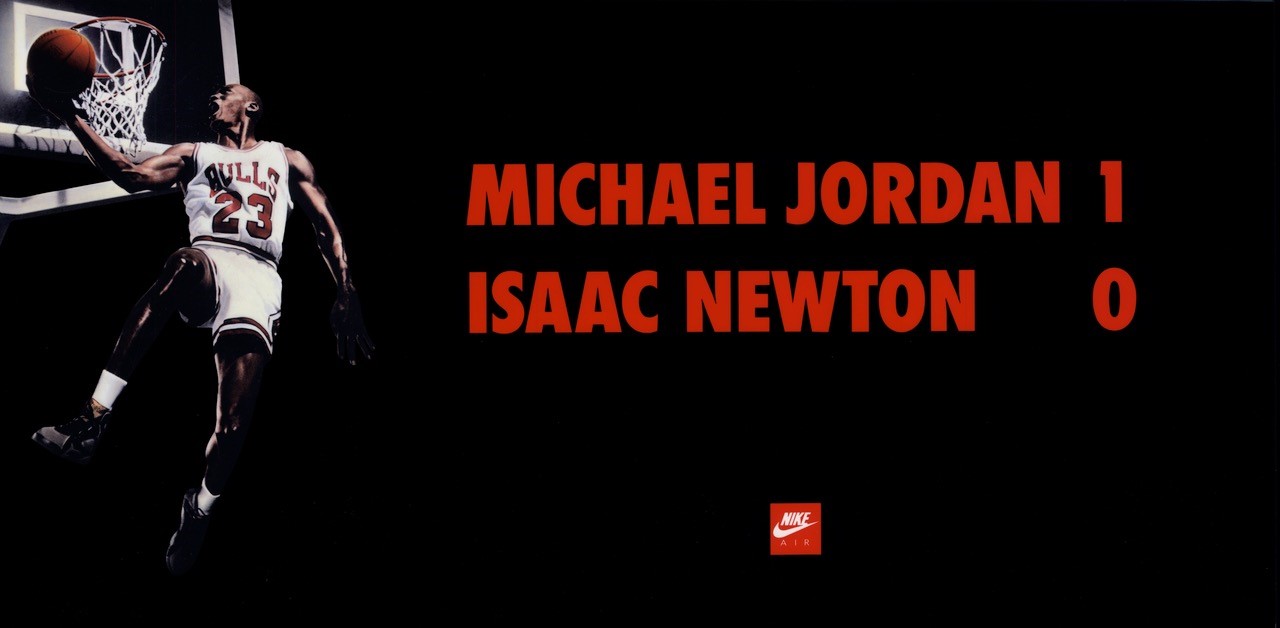
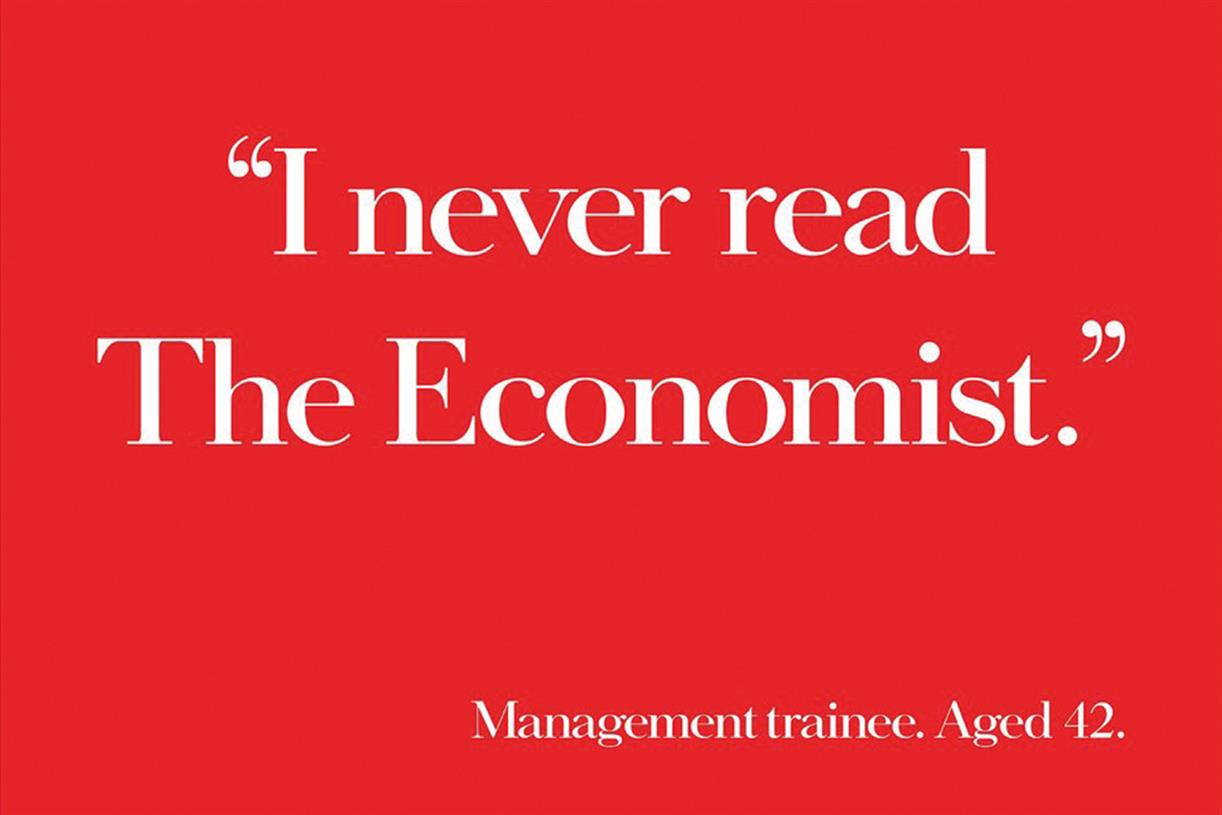
Conclusion
How is a floating block helping me generate ideas for marketing purposes, you might ask?
It’s not about the floating block, or the miniature sun – it’s about the concept behind them. Both concepts use technology to awe people, to deliver a unique experience.
That’s what you need to take from these examples: discover the underlying principles and find out how you could use them to power a new campaign or a redesign of the website or a landing page.
Join the Conversation
We’d love to hear what you have to say.
Get in touch with us on our LinkedIn Page, Facebook Page, Twitter or TikTok.
3 drivers of innovation: customers, product, service
In our previous article on innovation, What are the 4 types of innovation? we talked about how employers are expecting employees to have innovation-focused skills, the definition of innovation, the difference between innovation, creativity and invention and the 4 types of innovation.

What does your company need to innovate?
Innovation is a broad subject and therefore can be a daunting challenge for anyone trying to approach it. My solution is to place the information in categories. Organizing information in whatever way feels comfortable for you (lists, diagrams etc) improves your learning process greatly.
For the present article, let’s go deeper with the conversation on innovation and answer the following questions:
What drives innovation?
What stands at the core of innovation-centred efforts?
What is the first step toward innovation?
In this article:
- Customer-led innovation: customer-driven innovation, customer-centered innovation, customer-focused innovation;
- Product innovation: definition and example;
- Service innovation: definition and example.
The drivers of innovations are customers, product and service.
The first step on your path toward innovation should be deciding where to focus your efforts.
Are you going to focus on your customers and create products that meet their needs? Will you focus on product development?
Or find a new way to serve your customers?
Let’s discover more about each innovation driver!
Customer-led innovation
Customer-led innovation is when the company finds an innovative solution to a demand arising from the customer experience & dissatisfaction with the choices currently available in the marketplace.
Examples of customer-led innovations:
- The extended battery life for smartphones;
- LEGO plastic bricks with tubes inside to stick together thus preventing the constructions from falling apart;
- Bumble, the dating platform allowing only female users to make the first contact with matched male users;
- Canva, the design platform for non-designers who had neither the money nor the time to invest in professional tools like Photoshop;
- Amazon’s Show and Tell feature allowing the blind to identify grocery items by holding each item to the Echo Show camera and asking, “Alexa, what am I holding?”.
According to this paper published in the award-winning Research Technology Management journal, customer innovation “has become an essential strategy for organizational survival.”
There are 3 types of customer innovation:
- Customer-driven innovation
- Customer-centred innovation
- Customer-focused innovation
What is customer-driven innovation?
At the centre of customer-driven innovation is the customer.
The innovation is made by the customer with the organization having a coordination role. The end result is an innovation that is dynamic, impossible to control and difficult to get to the market. The entire process is time-consuming and requires high levels of interaction between the customers and the organization.
What is customer-centred innovation?
Customer-centred innovation is about innovating with customers.
At the centre of this type of innovation are the customer AND the organization. The role of the organization is that of the communicator. This type of innovation is open, difficult to control and coordinate. The main challenge: there’s no shortage of ideas; the difficulty stands in the organization’s ability to develop them.
What is customer-focused innovation?
Although it’s called customer-focused innovation, at the centre of this type of innovation is not the customer, but the organization alone. A customer-focused innovation is where the organization innovates for the customer.
The organization discovers customer needs and seeks to satisfy them by expanding the choices available within a product category.
The organization is the innovator. The innovation is closed, easy to control and to coordinate. The main challenge of this type of innovation is that it requires an ongoing process of customer analysis.
Here are all three types of customer innovation in one picture:
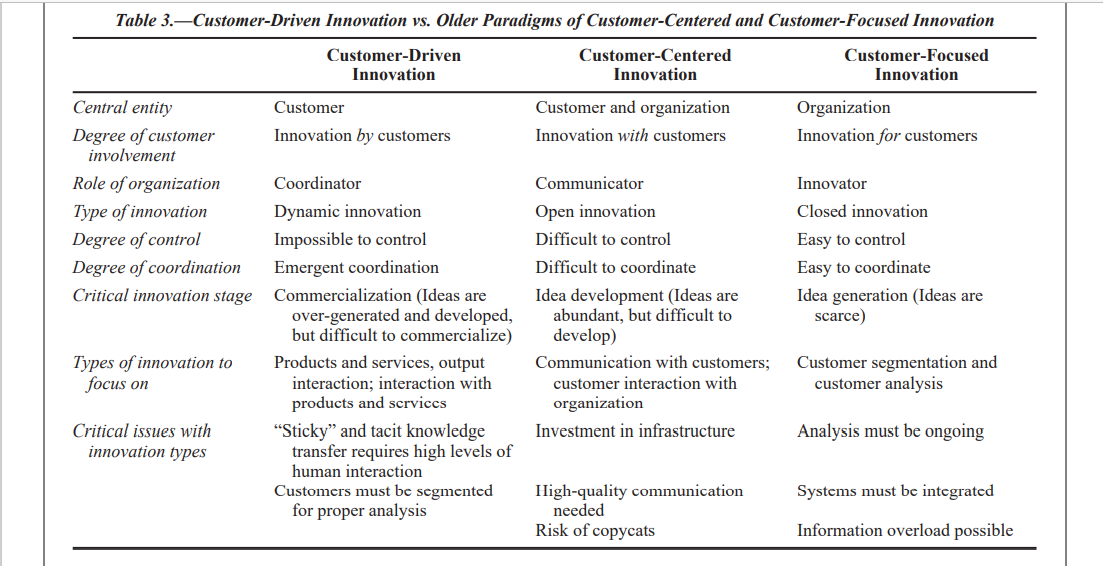
Customer-driven innovation, source Research Technology Management
ServiceNow – customer-led innovation example
ServiceNow is a platform that lets people automate workflow in a business. The company was ranked #1 by Forbes in its 2018 World’s most innovative companies list.
ServiceNow delivers digital workflows that create great experiences and unlock productivity. This is the future of work. Behind every great experience is a great workflow.
The company was founded by Fred Luddy in 2004. In an interview with Forbes, Fred Luddy says he’s never had an original idea but has always paid close attention to anybody doing, struggling to do or wishing they could do differently.
In his opinion, the company must “deeply, deeply, deeply understand customer needs”.
Also, technology must be used in the service of the employee. In keeping with his words, he met with over 500 customers and asked every one of them these questions:
What are your most important priorities? What keeps you up at night?
And regarding ServiceNow, what are we doing well? And—very importantly—where can we get better?
Product innovation
Product innovation is the development and market introduction of new, redesigned, or substantially improved goods.
Apple – Product innovation example
When you say product innovation and development, you say Apple.
The $2 trillion tech company has been launching new products in every one of its product lines every year since the company’s foundation four decades ago.
Apple’s goal is to create the world’s best products which are also what consumers want. The company has set out to make only great products by constantly focusing on innovating.
Innovation is making things better and not just merely changing. And that requires a depth of fall which is well beyond merely changing something.
Tim Cook
Service innovation
Service innovation is changing the way you serve your customers to create greater value for them and deliver more revenue for your organization.
It’s about providing customers with an amazing and improved experience that wasn’t available before.
L’Oreal – Service innovation example
L’Oreal is one of the most innovative companies in the global beauty market.
As per the company’s 2020 Research, innovation & beauty tech report, L’Oreal has invested 964 million euros in Research & Innovation.
The beauty company has embraced the digital revolution as early as 2012. Since then L’Oreal has integrated technology to serve customers better and more efficiently.
One example is the brand’s use of Augmented Reality and Artificial Intelligence to virtually try on its products.
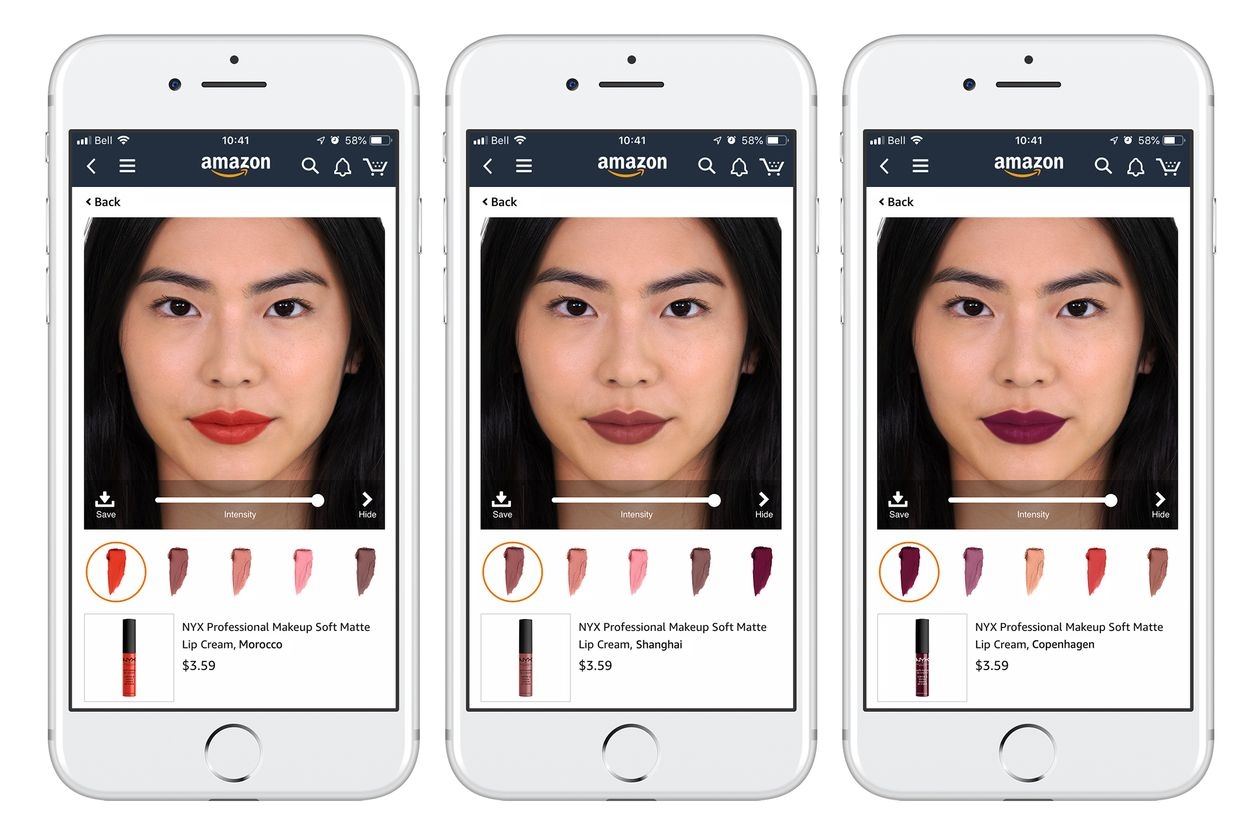
At CES 2020, L’Oreal unveiled Perso, an AI-powered at-home system.
The device delivers on-the-spot skincare and cosmetic formulas that optimize for increasing levels of personalization over time.
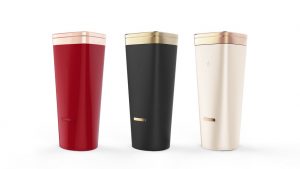
Perso, Courtesy of L’Oréal
Here’s what Nicolas Hieronimus, L’Oréal’s Deputy Chief Executive Officer had to say about the company’s innovation goals:
Building on our deep scientific heritage and leadership in innovation, L’Oréal is once again leveraging advanced technology to create smart beauty products and services that answer the needs of our consumers and offer them near-limitless personalization and precision.
Join the Conversation
We’d love to hear what you have to say.
Get in touch with us on our LinkedIn Page, Facebook Page, Twitter or TikTok.
What growth strategies does Apple use? An Ansoff Matrix analysis
What growth strategies does Apple use? Let’s find out by applying the Ansoff Matrix framework.
What is the Ansoff Matrix?
The Ansoff Matrix is a strategic planning tool that provides a framework to help executives and managers devise strategies for future growth.
Also called the Product/Market Expansion Grid, the Ansoff Matrix is a method for measuring the profit potential of alternative product-market strategies.
There are 4 growth strategies within the Ansoff Matrix:
- market penetration,
- market development,
- product development,
- diversification.
What growth strategies does Apple use?
In 2018, the 45-year-old tech giant became the first US company to hit the $1 trillion milestone.
Last year, Apple surpassed it when the company registered a new record: a $2 trillion valuation on the stock market.
Let’s see how Apple is growing according to the Ansoff Matrix.

Join BRAND MINDS 2023.
Ansoff Matrix for Apple – Market penetration
Market penetration is about increasing sales.
Thanks to the iPhone, Apple’s core product, the company has ranked among the Top five smartphone vendors in the world since 2009.
Apple’s main strategy for increasing iPhone sales every year is a combination of pricing strategy, product innovation and community leveraging.
Apple has been growing a strong community of die-hard passionate fans since the early 1980s when Guy Kawasaki became the brand’s chief evangelist.
He was the first to understand how valuable an engaged community is for the brand. Through his EvangeList, a mailing list that brought together all Apple fans around the world, he managed to influence and inspire the Apple community with the purpose to support and defend Apple’s products and brand image.
When Apple launches a new iPhone model every year, these fans are the first customers to purchase the product. They are the early adopters, fully dedicated to the brand. To the rest of the world, the launch price of a new iPhone might seem very high. iPhone fans see a different story, one of emotional engagement, excitement and the feeling of participating in a historical event. Owning an iPhone also makes a statement about you as an individual.
When a new iPhone is launched, the previous model decreases in price thus driving a continuous flow of new and old smartphone sales.
Ansoff Matrix for Apple – Market development
Market development is about selling existing products in new markets.
The latest figures from market research showed that the iPhone 11 was the most popular model of all smartphone brands sold on the Chinese market in 2020 (source). China is Apple’s second largest market following the US.
How did Apple expand its business to China?
Apple entered the Chinese smartphone market in 2010. Within five years, Apple’s sales in the region grew more than 20-fold (source).
What was behind Apple’s amazing success in China?
Great timing!
Apple began tapping into the Chinese market around the time the country’s economy was seeing a resurgence due to the rising world demand for consumer electronics.
The Chinese urban middle class was beginning to form. And they had money to spend. The iPhone was one of the consumer goods they could now afford to buy as a symbol of wealth and status.
In recent years, with the rise of strong competition from Huawei and Samsung, sales in China have been stalling.
It’s time for Apple to expand into a new country and India has shown increased demand for Apple products through the company’s third-party partners.
CEO Tim Cook announced last year that the tech giant would be opening its first flagship store in India by the end of 2021.
Ansoff Matrix for Apple – Product development
Product development is about developing new products in the same market.
How much does Apple invest in research and development?
Apple Inc. spent a record $18.75 billion on research and development in its 2020 fiscal year, increasing by about $2.5 billion from its 2019 total (Statista). It’s more than Samsung ($18.6 billion) but less than Huawei ($20 billion), Apple’s main competitor.
Looking outside the smartphone industry, to the tech companies that make up the Big Five list, Apple is yet again not the biggest spender on R&D: in 2020, Amazon spent $42 billion and Google, $27 billion.
Apple has been launching new products in every one of its product lines every year since the company’s foundation four decades ago.
Apple I, the first personal computer created by Steve Jobs and Steve Wozniak in 1977 was not the first personal computer ever to be commercialized on the market.
Four years earlier, Xerox had launched Xerox Alto. The Alto had innovative features like a graphical user interface (GUI), a mouse, large internal and external memory storage and specific software.
Yet the launch of Apple’s computer marks the beginning of the personal computer industry.
MacBook Air, Apple’s latest laptop launched in the Fall of 2020 currently ranks at #1 in the top 3 best laptops in the world.
Apple has set out to make only great products by constantly focusing on innovating.
Ansoff Matrix for Apple – Diversification
Diversification is about developing new products in a new market.
Apple began diversification early on.
Throughout its history, the company has produced a wide range of products like drives, printers, modems, displays and gaming consoles which were later discontinued.
Starting with 2001, Apple has developed innovative product lines like the iPod (2001), the iPhone (2007), the iPad (2010), the AppleWatch (2015) and the smart speaker HomePod (2018).
What makes Apple so prolific and innovative?
Its strategic approach to R & D. Apple doesn’t innovate to be the first; it innovates to be the best.
The iPhone was not the first smartphone on the market when it launched in 2007. There were smartphones manufactured by brands like Nokia, Samsung, Sony Ericsson and Motorola. Yet, the iPhone set a new standard in the industry and quickly became a trendsetter.
It all comes back to not being the first, but being the best.
Here’s what Apple CEO Tim Cook said in an interview in 2015 regarding how the company decides what new products to develop next:
When Apple looks at what categories to enter, we ask these kinds of questions: What are the primary technologies behind this? What do we bring? Can we make a significant contribution to society with this? If we can’t, and if we can’t own the key technologies, we don’t do it.
What is Apple going to make next?
As different as the current product lines are, they belong to the same market: consumer electronics. They are, as the experts say, related diversification.
Over the past year, rumours have been circulating about Apple going outside its main market, in an unrelated diversification effort and building a car, more specifically, a self-driving electric vehicle.
In a market dominated by Tesla, what would the Apple Car look like?
What innovation will the car bring into the market?
What significant contribution to society will the Apple Car make?
We don’t know yet.
But if we are to believe Mr Cook’s statement, it should be big enough to blow the competition out of the water.
Join the Conversation
We’d love to hear what you have to say.
Get in touch with us on our LinkedIn Page, Facebook Page, Twitter or TikTok.
McKinsey 7S model of Nokia – where the company went wrong
From a cell phone pioneer to being acquired by Microsoft in 2013, Nokia is a case study of organizational failure. Let’s analyze where the company went wrong by applying McKinsey 7S model.
McKinsey 7S model is a business framework which can be used to analyze organizational effectiveness. According to the McKinsey model, the organization is a complex ecosystem consisting of seven interconnected factors: Structure, Strategy, Skills, Staff, Systems, Style and Shared Values.
The model is also a blueprint for organizational change.
To show you how you can use the McKinsey model 7S for the benefit of your organization, I will analyze mobile pioneer Nokia at the time of its demise, namely 2011-2013.
Here’s a brief background story:
In October 1998, Nokia became the best-selling mobile phone brand in the world with an operating profit of almost $4 billion. The best-selling mobile phone of all time, the Nokia 1100, was created in 2003. Five years later, Apple introduced the iPhone. By the end of 2007, half of all smartphones sold in the world were Nokias, while Apple’s iPhone had a mere 5% share of the global market.
In 2010, attempting to drive Apple out of the market, Nokia launched the “iPhone killer”. The model failed to achieve its goal and was the beginning of the end for Nokia. From that moment on, Nokia embarked on a downward spiral of low-quality phones. In just six years, the market value of Nokia declined by about 90%. The organization was acquired by Microsoft in 2013.
Now that you’re familiar with Nokia’s failure story, let’s analyze the organization before Microsoft made its move to acquire it by applying the McKinsey 7S model.
In my opinion, here are the factors that required immediate change: Structure, Style, Skills, Staff and Strategy.
McKinsey 7S model of Nokia
McKinsey 7S model of Nokia – Structure
Nokia of the era was a top-down line structure organization.
In public speeches given by the organization’s top executives, agility and being nimble were mentioned as key competitive advantages.
But it was all talk. The organization’s top management was living in a bubble, disconnected from the company’s technology development departments. Communication was one-way and teams were not empowered to contribute to the organization’s strategy.
To adapt to the new technological environment and compete with Apple, a powerful tech company, Nokia should have taken steps to change its structure from top-down hierarchical to decentralized and agile.

Instead of organizing employees in silos, with no communication and collaboration between them, the company should have placed its employees in teams, with every team working to achieve a common goal.
Team members should have been empowered to speak up, come up with solutions and work independently.
McKinsey 7S Model of Nokia – Style
In McKinsey’s model style refers to culture. What was Nokia’s culture at that time?
As per the 2015 paper Distributed Attention and Shared Emotions in the Innovation Process: How Nokia Lost the Smartphone Battle, Nokia suffered from organizational fear, status (We are no 1), in-house politics and temporal myopia.
Top managers had business backgrounds and lacked technological competence. Employee morale was low.
As the saying goes, culture eats strategy for breakfast. Top management should have adopted a transformational leadership style where the leader’s goal is to transform the organization so that it’s constantly improving.
Transformational leaders create a vision of the future that they share with their teams so that everyone can work together toward a shared goal and vision. Technology is ever-changing. Technology companies must embrace change in order to stand the test of time.
Transformational leadership would have been the best fit for Nokia because it fosters creativity and innovation through collaboration. This type of culture builds and maintains employee motivation and satisfaction and is effective in facilitating organizational change.
McKinsey 7S Model of Nokia – Skills
Nokia didn’t lack talent and didn’t have a skills gap in the company. There were no gaps in know-how or competence.
At its peak, Nokia had one of the top highly-skilled tech workforces in the world.
The company’s hardware and software engineers had designed one of the most successful and iconic cell phones in the world, there’s no doubt about it.
The problem was the top management. Between 2007 and 2010, the position of the Chief Technology Officer (CTO) disappeared from the top management team. Technical managers had left the company and new hires had no technical skills making it difficult for them to understand the technological challenges and the direction in which the company should be heading.
Conversely, top management members at Apple were all engineers. Nokia should have focused on increasing tech skills among C-level executives.
McKinsey 7S Model of Nokia – Staff
At Nokia, people were talking business instead of technology which is quite surprising for a software company.
The organization should have found ways to motivate and nurture its employees appropriately.
McKinsey 7S Model of Nokia – Strategy
Struggling to compete with Apple and adapt to the technological developments that were disrupting the business environment at that time, Nokia top management had to choose between three strategies: optimizing costs and volume, maximizing performance, or maximizing security.
They decided to go with cost optimization which made it impossible to achieve performance in software.
With Apple going for technological innovations and excellency, needless to say, they made the wrong decision.
Conclusion
At its peak, Nokia manufactured 40% of the world’s mobiles. The company had the human resources (skills and staff factors) required to keep innovating and increasing its market share.
Unfortunately, the company’s leadership (style factor) lacked core competences and vision necessary to drive change within the company.
They didn’t allow the tech talent in the company to contribute with valuable insights to important decisions. The company chose the wrong strategy which ultimately lead to its demise.
Join the Conversation
We’d love to hear what you have to say.
Get in touch with us on our LinkedIn Page, Facebook Page, Twitter or TikTok.
Why Share Of Voice is important for your brand
On this page:
What is Share Of Voice?
How to measure your brand’s Share Of Voice
Why is Share Of Voice important for your brand
Six tips to boost your brand’s Share Of Voice with examples
What is Share Of Voice?
Commonly referred to under the acronym SOV, Share Of Voice is the share of conversations generated around your brand, products or services on different digital marketing channels (news sites, blogs, forums, social media) in comparison to its direct competitors.
How do you measure your brand’s Share Of Voice?
Share of Voice is a percentage resulting from the following calculation: take the number of your brand’s mentions over a period of time, divide it by the total number of brand mentions (your competitors’ and your brand’s) over the same period of time then multiply the result by 100 and you get your brand’s Share Of Voice.
SOV = Your brand’s online mentions/Total number of your competitors’ online mentions x 100
Here’s an example of measuring Share Of Voice for the top five video streaming providers- HBO, Netflix, Hulu, Disney+ and Amazon Prime Video. As the calculation shows, Netflix has the highest Share Of Voice of the five providers.
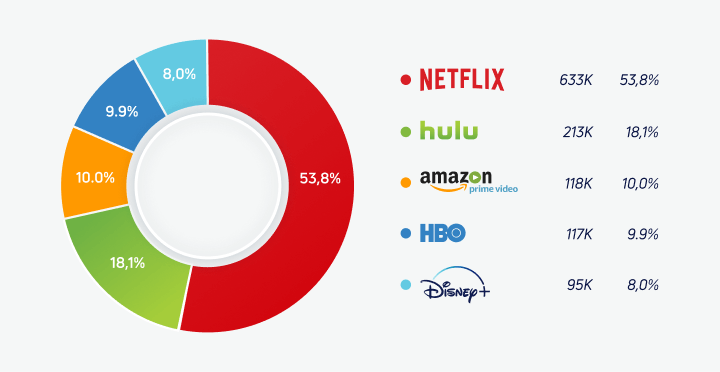
Share Of Voice metrics for Top 5 video streaming providers (source: awario.com)
How to implement social listening
You cannot measure Share Of Voice without brand mentions and to get mentions you need to do social listening.
There are many social listening tools available for marketers, starting with Google Alerts which monitors the web and is free.
If you are looking for a more sophisticated social listening tool, you can choose from a slew of providers such as Brand24, Mention, Talkwalker or Awario.
Seven reasons why your brand should do social listening:
- Monitor and influence brand awareness
- Monitor and control brand crisis
- Find prospects and turn them into leads or customers
- Monitor your competition
- Find conversations your brand can join or learn from
- Find reviews and feedback
- Find influencers
Why is Share Of Voice important for your brand and business?
As marketers, we never stop thinking about the best idea fueling our next campaign. Whether it’s a blog post or a social media post, it’s our job to put out content that delights our customers.
What are your customers talking about when they refer to your brand?
First of all, are they talking about you at all?
Who does the talking: your leads, your customers or people in general?
Where are these conversations taking place: social media, forums, comments to news articles?
Answering these questions will give you an overall view of your brand’s awareness. If people are not talking about you, it’s time to come up with a brand awareness campaign that will help you gain attention and get people talking about your brand.

In his book, The Long and the Short of It: Balancing Short and Long-Term Marketing Strategies, co-author Les Binet recommends that marketers balance short- and long-term marketing strategies.
He argues that brands should run both types of campaigns but tweak the balance to 75% brand building and 25% activation.
“The digital revolution is leading to increased activation efficiency, and so a higher proportion should go to brand. It seems paradoxical, but what’s happening in the digital world means you need to build that brand even more”, Les Binet says.
Let’s say there are conversations centred around your brand. The next question is, are they positive or negative? Do they rave about your latest product, or are they complaining?
Becoming aware of these conversations is an excellent opportunity to jump in, thank your happy customers, then do your best to turn them into your brand’s ambassadors.
When you are dealing with complaining customers, it’s equally a good opportunity for your business to pinpoint blind spots and put the spotlight on aspects that should be improved.
Amazon founder and CEO Jeff Bezos calls complaining customers “divinely discontent”.
In his 2016 letter to shareholders, Jeff says “customers are always beautifully, wonderfully dissatisfied, even when they report being happy and business is great.”
If I were to choose only one factor responsible for Amazon’s success, it would be the company’s obsession with customers, EVERY customer, not only the happy ones.
6 recommendations to boost your brand’s Share Of Voice
There’s really no secret to boosting your brand’s Share Of Voice: you need to achieve top-of-mind awareness.
Top-of-mind awareness (TOMA) is an essential concept in consumer behaviour, marketing research and marketing communications by illustrating how well brands rank in the minds of consumers when thinking of a particular industry or category.
TOMA is defined as the first brand that comes to mind when a customer is asked an unprompted question about a category.
Let’s do a short exercise. Name the first brand that comes to mind when you think of running shoes, watches, ladies perfume, soft drinks. I’ll give you my answer: Nike, Rolex, Chanel and Coca-Cola. Was yours pretty much the same? That’s TOMA.
So how could your brand reach the coveted top-of-mind spot?
By staying in front of your prospects’ eyes for as long as possible. Coca-Cola has been the undisputed leader of the soft drinks category for the past 120 years.
![]() Be creative.
Be creative.
![]() Be relevant.
Be relevant.
![]() Be different.
Be different.
![]() Leverage the power of influencers (nano-, micro- or celebrities).
Leverage the power of influencers (nano-, micro- or celebrities).
![]() Appeal to your prospects’ wants instead of their needs.
Appeal to your prospects’ wants instead of their needs.
![]() Commit to your core values and be bold.
Commit to your core values and be bold.
Barbie – The Dream Gap Project
Ruth Handler, Barbie’s creator, has designed the now-famous doll as a way to tell little girls that they could aspire to be anything they wanted to be. Ruth’s insight was that girls of the 1950s no longer wanted to grow up just to be mothers.
Seventy years later, the company holds to its core values by launching its 2018 campaign The Dream Gap Project.
The campaign signals the brand’s commitment to close the gender gap. Oh, by the way: Barbie’s YouTube channel has over 9 million subscribers. By comparison, Apple, the billion-dollar tech company, has almost 12 million subscribers. That’s pretty good for a plastic doll!
The brand’s efforts to update its products and become a better example for every little girl has resulted in a boost in sales starting with 2017. In 2019, Mattel’s Barbie brand generated gross sales amounting to about $1.16 billion, up from about $1.09 billion the year before.
Nike – You can’t stop us
For Nike, the world’s leading athletic apparel maker, everyone is an athlete.
Every campaign launched by Nike is a brilliant illustration of the brand’s mission: doing everything possible to expand human potential. Nike is a brand synonymous with resilience, overcoming one’s limitations, working to reach one’s dreams, diversity and equality.
Nike’s campaigns are inspiring and motivating, but they also take a stand on controversial topics. Such is the case of Dream Crazy, Nike’s advert launched last year that touches on racial inequality and police brutality. The advert prompted a flood of debate and put the brand into the spotlight.
The latest Nike ad is You can’t stop us and is a masterful example of conveying the brand’s message with a creative twist, in this case – video editing.
Nike’s advertising appeals to people’s wants and dreams, is creative, bold and relevant. And this approach is good for the bottom line. In 2020, the Nike brand was valued at approximately $34.8 billion, which was an increase of over two billion U.S. dollars from 2019 (source).
Apple – The whole working-from-home thing
With a brand value of $140 billion, Apple ranks third in the top 100 most valuable brands in the world in 2020, following Amazon and Google (source).
Apple designs technology that works together seamlessly. In the workplace, “Apple products help employees work more simply and productively, solve problems creatively, and collaborate with a shared purpose.”
That’s an excerpt from the brand’s webpage dedicated to its business products.
Now imagine these fourteen words made up a brief and you have been tasked with creating a campaign based on them. Think of three ideas that you could pitch to Apple.
It’s a great scenario if you want to exercise your creativity. If you’re not in the mood, check out the brand’s campaign series – Apple at Work – The Underdogs.
The series checks every benefit outlined in the brief, in an entertaining way. The second episode – The whole working-from-home thing gets real with all the ups and downs of the work-from-home world we are all living in now and it has struck gold. The video was published two weeks ago and it’s already at 26 million views, making it Apple’s the most-viewed in the last three months.
Join the Conversation
We’d love to hear what you have to say.
Get in touch with us on our LinkedIn Group, Facebook Group or Twitter.
Apple Shifts Staff From Autonomous Vehicle Project
Apple Shifts Staff From Autonomous Vehicle Project
Apple laid off 200 employees from its self-driving car unit, “Project Titan”.
Apple’s car project has been going since 2014 and has been marked by executive reshuffles, changes in direction, and rounds of layoffs.
Check out the video:
Join the Conversation
We’d love to hear what you have to say.
Get in touch with us on Facebook Group and Twitter.
Biggest Tech Acquisitions of 2018: Apple, Amazon, Google, Microsoft
The future in technology is built by these top 4 tech giants: Apple, Amazon, Google and Microsoft. These companies take leaps by developing new products and maintaining a steady flow of innovations.
But when they wish to meet business goals which are time and resource consuming, they sometimes turn to acquisitions.

Here are the acquisitions made by these tech giants in 2018:
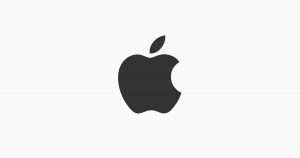
Apple current market valuation – $915b
Platoon is a talent-scouting and development startup that provides artist development as well as video, audio, and marketing services to singers and bands. Apple acquired Platoon in 2018 in a move to integrate even further with the music industry.
Another company that Apple acquired in 2018 is Silk Labs, a machine learning company using on-device AI to empower businesses to build the next generation of intelligent connected devices. This acquisition shows Apple’s desire to double down and speed up development of the next-generation AI-powered Apple products.
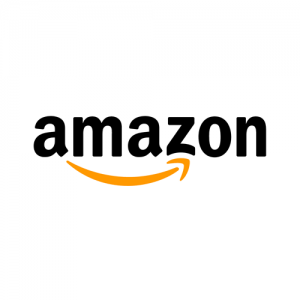
Amazon’s current market valuation – $828B.
In 2018, Amazon acquired Ring, an outdoor home security which provides homeowners with smart doorbells with cameras for $1B. Following this acquisition, Amazon sets a foothold on the smart-home market, extending its services at the same time.
PillPack is a full-service pharmacy that sorts medication by the dose and delivers it to your door. Sources said Walmart was in the process of acquiring PillPack when Amazon swooped in and sealed the deal for $1B. Is it a surprising move? Not to Amazon! The platform’s combination of pharmacy experience and technology focus is what attracted Amazon to close the deal. With this acquisition Amazon sets out to enter the healthcare industry.

Google’s current market valuation – $781B.
Education is one of Google’s areas of focus alongside economic opportunity, inclusion, crisis response and impact challenge. Google Classroom is Google’s tool to make teaching more productive, collaborative and meaningful. The acquisition of Workbench, a comprehensive platform for project-based learning supports Google Classroom to achieve its goals.
It is estimated that India operates around 14,000 trains on a daily basis across the country so the popularity of the Where is my train app is understandable. The app helps commuters track arrivals and departures as well as buying seats and it claims 10 million registered users. Google acquired Where is my train in 2018 after the big tech company reportedly beat Xiaomi, the Chinese smartphone maker to the deal. This acquisition shows Google’s interest in tapping the million user market in India.
DORA, short for DevOps Research and Assessment is a digital transformation research company which collaborated with Google Cloud in the past. The acquisition of DORA was a natural step for Google towards achieving its purpose of catering to the developer and the open community.
We are excited for DORA to join the Google Cloud family to help strengthen our data-driven approach to understanding what makes developers and operators productive and happy.
Melody Meckfessel, vice president of engineering for Google Cloud
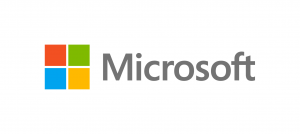
Microsoft’s current market valuation – $771B.
We’re mobilizing to pursue our extensive opportunity in a 100-plus-billion gaming market. This means broadening our approach to how we think about gaming end to end, about starting with games and how they’re creating and distributed, and how they’re played and viewed.
Satya Nadella
Beginning with 2017, the gaming industry became world’s favorite form of entertainment with $116B revenues, jumping ahead more traditional mediums such as TV, movies and music.
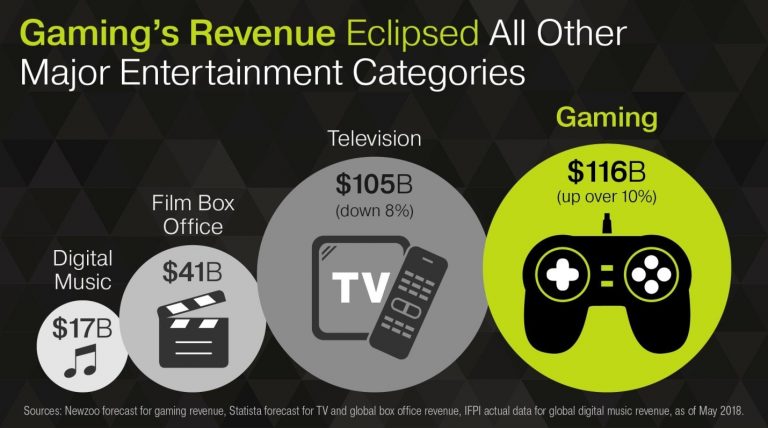
source: gamecrate.com
In 2018 Microsoft acquired a total of 15 companies, out of which seven were games developer studios: PlayFab, Compulsion Games, Undead Labs, Playground Games, Ninja Theory, inXile Entertainment and Obsidian Entertainment. We can definitely say that Microsoft’s interests are turning towards the gaming industry.
In a post published in January 2018 on the Microsoft blog, Kareem Choudhry – Corporate Vice President, Gaming Cloud expressed Microsoft’s goal of becoming the top player in the gaming industry:
Over 1 billion people play games, fueling a thriving industry whose ecosystem is evolving and growing quickly. Many industries are moving to the intelligent cloud, and this trend is true in gaming as well. This means an increasing number of developers are looking to create connected games for mobile, PC and console devices that have a significant emphasis on post-launch operations.
Given the acquisitions that followed throughout 2018, I’d say the giant tech company is on the right track.
Here are other directions Microsoft is developing through its latest acquisitions: conversational AI, video-based social learning, machine learning for autonomous systems and bot development.
Join the Conversation
We’d love to hear what you have to say.
Get in touch with us on Facebook and Twitter.
sources:
appleinsider.com/articles/18/12/07/apple-acquires-ar-startup-platoon-with-focus-on-new-emerging-artists
crn.com/news/cloud/google-cloud-buys-digital-transformation-devops-research-firm-dora
gamecrate.com/statistically-video-games-are-now-most-popular-and-profitable-form-entertainment/20087
techcrunch.com/2018/12/10/where-is-my-train-its-with-google-now/
techcrunch.com/2018/11/21/apple-silk-labs/
Top 6 tech leaders in 2018
We are inspired by their vision and leadership styles.
Some of them set out to change the world.
Others changed the company’s core values to usher in a new era of evolution and development.
Here is our top 6 tech leaders in 2018:
Tim Cook, CEO of Apple – “We give back in job creation”

photo: politico.com
In 2011, after Jobs resigned, Cook was named the new CEO of Apple.
His leadership focuses on people, strategy, and execution.
He also states that a company should have values because a company is a collection of people.
Asked about what Apple gives back to society, Tim replied:
We give back through our work in the environment, in running the company on renewable energy. We give back in job creation.
Under Tim Cook, Apple has the same focus on standout hardware and design as it had under Jobs. But Cook is making his mark by highlighting the importance of social efforts: LGBT rights, philanthropy, corporate diversity, renewable energy and improving manufacturing conditions abroad.
Apple market value 2018: $910 billion (source: money.cnn.com)
Sundar Pichai, CEO of Google – “Let others succeed”
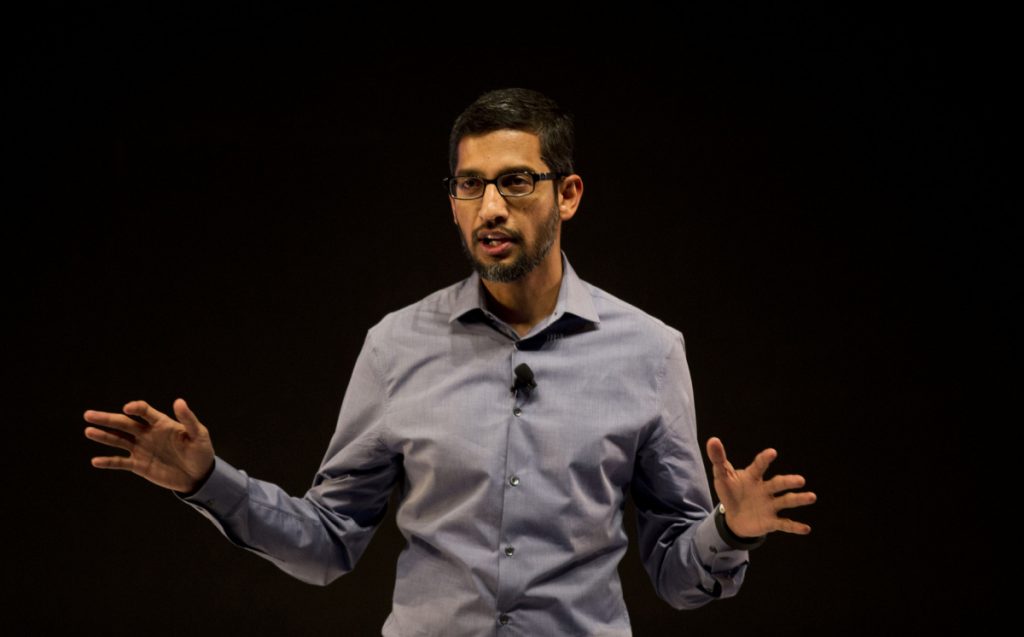
photo: fictional4.rssing.com
Sundar Pichai was appointed CEO of Google in 2015, following Larry Page, the co-founder and former CEO of Google.
Sundar joined Google in 2004 and was involved with developing a series of client software products including Google Chrome, Google Drive, Gmail, Google Maps and Android.
In Sundar’s opinion leadership is
less about trying to be successful (yourself), and more about making sure you have good people and your work is to remove that barrier, remove roadblocks for them so that they can be successful in what they do.
He focuses on building Google as a collaborative culture company and is a much-loved leader by his employees.
Google market value 2018: $762.5 billion (source: cnbc.com)
Jeff Bezos, founder and CEO of Amazon – “Get Big Fast”

photo: inc.com
Jeff Bezos is the founder and CEO of Amazon, the world’s largest online shopping retailer. He founded his company in 1994, in his garage and named it after the Amazon River and because it started with A, the first letter of the alphabet.
Although Amazon was originally an online bookstore, Bezos had always planned to expand to other products.
To push Amazon forward, Bezos developed the mantra “Get Big Fast”, which spoke to the company’s need to scale its operations and establish market dominance.
Bezos is known to enforce a 2-pizza rule, which means the meetings must be small enough where two pizzas can feed everyone in the boardroom.
Amazon market value 2018: $702.46 billion (source: fortune.com)
Satya Nadella, CEO of Microsoft – “The C in CEO stands for Culture”

photo: cnbc.com
In 2014, Satya Nadella became the current CEO of Microsoft, following Bill Gates and Steve Ballmer.
The most important change that Satya brought to Microsoft was shifting the company’s culture. He says that his job as CEO is to create a culture that focuses on listening, learning, and harnessing individual passions and talents. Satya also placed employer empowerment at the core of Microsoft’s culture.
Nadella is the author of Hit Refresh:The quest to rediscover Microsoft’s soul and imagine a better future for everyone. In his book, he explores his life, his career in Microsoft and how he believes technology will shape the future.
In the years since Satya became CEO, Microsoft stock have risen more than 130% achieving an all-time high.
Microsoft market value 2018: $699.22 billion (source: fortune.com)
Jack Ma, founder and CEO of Alibaba – “Customers first, employees second, and shareholders third”

photo: byrslf.co
A former English teacher, Jack learned about the internet in 1995 and realized early on that the internet had something great to offer. After a few business fails, Jack founded Alibaba, a China-based business-to-business marketplace site in 1999. Soon Alibaba became a multinational technology conglomerate and one of the most valuable technology companies in the world.
Jack Ma is an enlightened leader.
One of his goals is to improve the lives of employees who grow with the company, by offering them Alibaba stock options. He believes in the empowerment of the young by enriching their culture and education.
His focus is
to make sustainable money while being responsible to the society and improving the world.
Alibaba market value: $500 billion (source: technode.com)
Mark Zuckerberg, founder and CEO of Facebook – “Making the world more open and connected”

photo: wired.com
Mark Zuckerberg launched Facebook in 2004, from his dormitory room at Harvard University.
He says Facebook’s mission is
to give people the power to build community and bring the world closer together.
There are 7.6 billion people in the world (as of March 2018, according to worldometers.com) and Facebook reported that 2.13 billion are monthly active Facebook users! Although controversial, Facebook is too big to ignore.
Mark is a transformational leader.
He motivates employees through his passion for online communication and his constant pursuit to improve and innovate. He provides employees an opportunity to share in the success and views making mistakes as an opportunity for growth within the company.
Facebook market value 2018 (following Cambridge Analytica scandal): $476.83 billion (source: techcrunch.com)
If you liked the article, share it with your friends!
Top marketing trends for 2018 -part II
AI and Machine Learning are influencing the whole marketing process
According to Salesforce research, quoted by cmo.com.au, artificial intelligence (AI) use by marketers will grow more than 50 per cent in the next two years,with some putting it at 20 per cent of all business content authored by machines in 2018. At the same time, with AI at the forefront, marketers will be better able to understand the likes and dislikes of a customer, determine what specific branded content should be served to that consumer, and track all their interactions through the customer’s journey.
Moreover, according to channels.theinnovationenterprise.com, 2018 will see chatbots develop to a point where they will become genuinely useful for both brands and consumers alike,with the global chatbot market is expected to reach $1.23 billion by 2025. “The rise of chatbots is part of the effort to exploit ‘dark’ social – the platforms on which your interactions and information aren’t public. People are spending more and more time in messaging apps (Facebook Messenger, iMessage, WhatsApp, etc), actually eclipsing the time spent in social media apps, which makes them a huge area for brands to be getting involved in. Over the course of 2018, AI in chatbots will develop to the point at which they become genuinely useable. 80% of businesses already use (or plan to use) chatbots by 2020, and next year will see big steps taken towards that end,” they added.
Video live streaming
If you weren’t using live video to interact with your customers in 2017, it needs to be a priority for you in 2018, considers Neil Patel, for quicksprout.com. “Studies suggest 80% of consumers prefer watching a live video from a brand as opposed to reading a blog. And 67% of people are more likely to purchase a ticket to events like a concert after watching a live stream of a similar event,” added Patel.
Live video streaming represents one of the best ways of connecting with your audience, because people tend to attach on a deeper level thanks to the visually stimulating and interactive nature of a live broadcast. The more immersive the live content is, the better — live streaming has been used to conduct interviews, share live events, and grant exclusive, behind-the-scenes access, but its possibilities are nearly endless.
Augmented Reality straight from the phone
Apple seems anxious and aims to have technology ready for an augmented-reality headset in 2019 and a product by 2020. Unlike the current generation of virtual reality headsets that use a smartphone as the engine and screen, Apple’s device will have its own display and run on a new chip and operating system.
The company began putting together a team to work on AR-related projects a couple of years ago, Bloomberg reported in March 2017. Led by Mike Rockwell, who previously ran engineering at Dolby Labs, the group has now grown to several hundred engineers from across Apple, the people said. Scattered across office parks in both Cupertino and Sunnyvale, California, the team is working on several hardware and software projects under the umbrella code name of “T288.”
Apple’s new technology, named ARKit, seemed to arrive at the perfect time. It works by imposing bright virtual objects into the real world – at a time when reality has never seemed darker. The feature is the kind of world-changing technology that’s on a par with the introduction of the iPhone 10 years ago, Tim Cook told The Independent.
Your car as entertainment hub
In-car entertainment (ICE), or in-vehicle infotainment (IVI), is a collection of hardware and software in automobiles that provides audio or video entertainment. If at its beginnings, the car entertainment would represent only car audio systems that consisted of radios and cassette or CD players, with the rise of the new technologies and the digital explosion, ICE includes automotive navigation systems, video players, USB and Bluetooth connectivity, Carputers, in-car internet, and WiFi. Once controlled by simple dashboards knobs and dials, ICE systems can include steering wheel audio controls and handsfree voice control.
Moreover, driven by the demand for more connected vehicles, in-car entertainment is getting more and more sophisticated. According to wikipedia, car makers, electronics and software suppliers, as well as newcomers from the Silicon Valley (such as Google and Apple), work together and also compete to come up with infotainment systems that are user-friendly and safe to use. ICE systems are increasingly commonplace with newer vehicle models and several auto makers have developed their own systems.
At the same time, with the mass adoption of smartphones worldwide, a new issue has emerged: the use of connected devices in the car. According to a 2015 survey conducted by AT&T and quoted by wikipedia, with a sample of over 2,000 US respondents, “7-in-10 people engage in smartphone activities while driving” including social media (40%), web browsing (30%) and even video chatting(10%).
Having in mind the concerns regarding possible accidents, Google and Apple’s mobile OSs’ making the bulk of the market, the two tech companies have developed projection modes (Android Auto, Apple CarPlay) to enable mobile devices to be operated in vehicles through the dashboard head unit so that the vehicle occupants don’t manipulate their devices directly, use an interface they are familiar with, and spend more time with their eyes on the road.
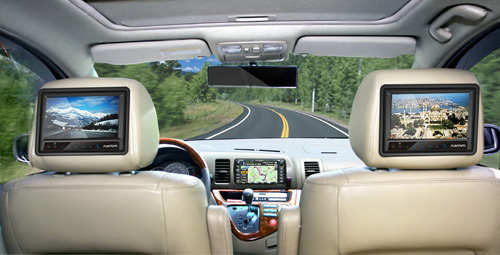
More than that, while travelling long distances,the entertainment systems become more than a pleasure,but a requirement. Especially if you have children and keeping them entertained and happy may otherwise seem as a hard task to accomplish. Companies are fighting to discover the next best thing for you and keep you hooked, either is a new incorporated tablet, a new surround system, tv and rear entertainment systems.
According to autobytel.com, while SUVs and minivans are the most common vehicles with dedicated entertainment screens for back seat occupants, you can also find some standout passenger cars with rear seat systems. With these installed, second-row passengers can watch their favorite movies or TV shows, enjoy gaming on the go, and even surf the internet. Here and here are some examples.
What will the future hold? Intel has just announced a partnership with Warner Bros. for developing in-cabin, immersive experiences in autonomous vehicle settings. “Called the AV Entertainment Experience, we are creating a first-of-its-kind proof-of-concept car to demonstrate what entertainment in the vehicle could look like in the future. As a member of the Intel 100-car test fleet, the vehicle will showcase the potential for entertainment in an autonomous driving world. The rise of the AV industry will create one of the greatest expansions of consumer time available for entertainment we’ve seen in a long time. As passengers shift from being drivers to riders, their connected-device time, including video-viewing time, will increase. In fact, recent transportation surveys indicate the average American spends more than 300 hours per year behind the wheel,” writes the Warner Bros.’ website.
According to the company’s representatives, they imagine riders enjoying immersive experiences never seen before, courtesy of in-cabin virtual reality (VR) and augmented reality (AR) innovations. For example, a fan of the superhero Batman could enjoy riding in the Batmobile through the streets of Gotham City, while AR capabilities render the car a literal lens to the outside world, enabling passengers to view advertising and other discovery experiences.










